Agri Business
- Agri Insurance
Agriculture
Aquaculture
- Farm Machinery
- Feed Management
- Horticulture
Livestock Farming
- Modern Farming
Organic Farming
- Pests and Diseases
- Plant Nutrition
- Poultry Farming
Project Reports
- Schemes/Subsidies/Loans
- Success Stories
- Agriculture News

Cattle Farming in the Philippines: Requirements, Business Plan, and Management
Cattle farming in the Philippines has been essential to the country’s agricultural industry for centuries. The sector contributes significantly to the nation’s food security, livelihood, and rural development. Below we learn about cattle farming business plan in the Philippines, the profitability of cattle farming in the Philippines, how to start cattle farming in the Philippines, and about different breeds and challenges faced in the Philippines.
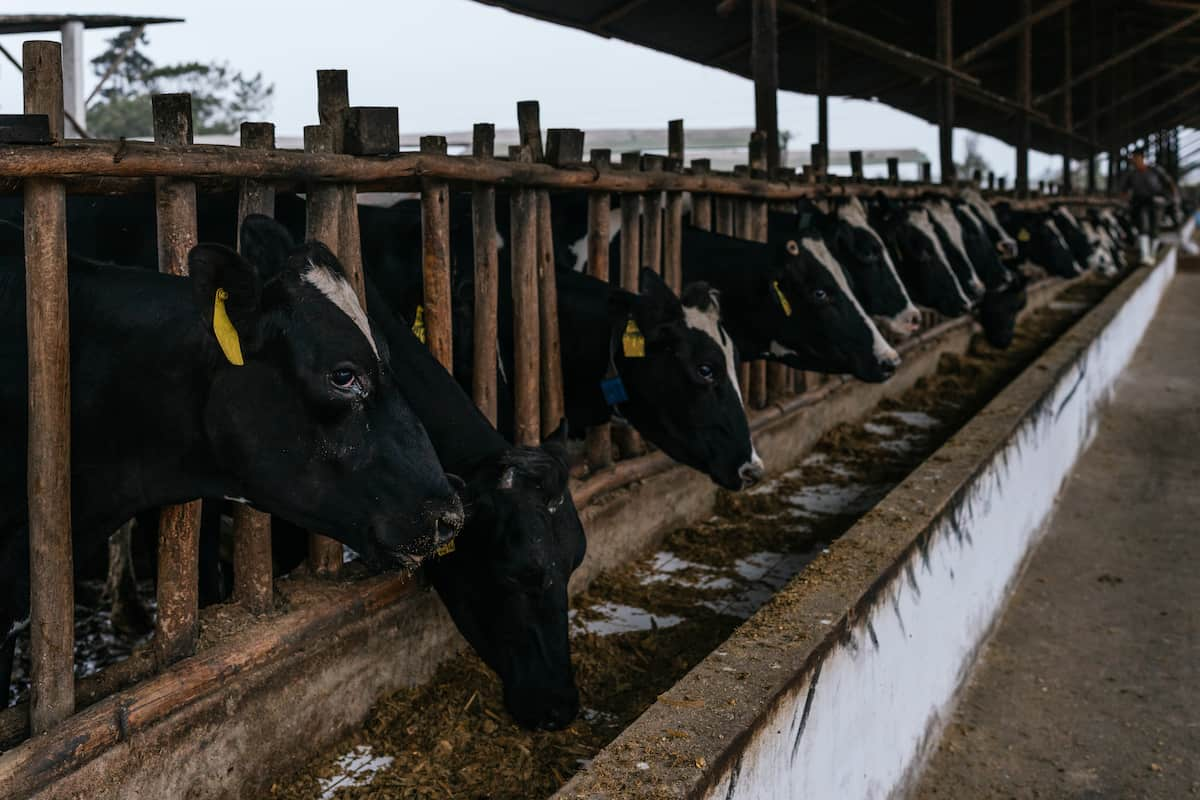
Cattle Farming in the Philippines
Historical background of cattle farming in the philippines.
Cattle were first introduced to the Philippines by the Spanish colonizers in the 16th century. Native breeds, such as the Philippine Native Cattle, were crossed with Spanish cattle breeds like the Andalusian and the Retinta. Over time, the cattle industry in the Philippines evolved to adapt to local conditions and serve the growing population’s needs.
Breeds of Cattle in the Philippines
- Native cattle (Bos taurus) are small-sized, hardy, and well-adapted to local conditions. They are primarily used for draught purposes, meat, and as a source of income for smallholder farmers.
- Dairy cattle (Bos taurus) are bred for milk production and include breeds such as Holstein, Jersey, and Sahiwal. The Philippine Carabao Center has also developed a crossbreed called the Philippine Dairy Buffalo, a cross between Murrah Buffalo and the Philippine Native Buffalo.
- Beef cattle (Bos indicus and Bos taurus) are bred for meat production and include breeds like Angus, Hereford, and Brahman. Crossbreeding with native cattle has produced hybrids like the Philippine Native x Brahman, which are well-adapted to local conditions and have good meat quality.
Cattle Management Practices
- Feeding and nutrition – The primary feed source for cattle in the Philippines is pasture grasses and forages. During the dry season, when pasture is scarce, farmers supplement their animals’ diets with rice straw, corn stover, and agricultural by-products. Concentrates such as corn, rice bran, and copra meal may also be fed to improve the animals’ nutritional intake.
- Breeding and reproduction – Artificial insemination (AI) and natural mating are the two primary methods of breeding cattle in the Philippines. AI is more prevalent in dairy cattle operations, while natural mating is more common in small-scale beef and native cattle farms.
- Health management – Vaccination, deworming, and tick control are essential to cattle health management in the Philippines. Farmers must also ensure proper sanitation and clean water sources to prevent the spread of diseases.
- Housing and infrastructure – Cattle housing in the Philippines varies depending on the scale and purpose of the farm. Small-scale operations often use simple, open-sided sheds, while larger-scale farms may have more sophisticated facilities with concrete flooring and proper drainage.
Challenges Faced by Cattle Farmers in the Philippines
- Limited access to quality breeding stock – The lack of quality breeding stock has resulted in the slow genetic improvement of cattle in the Philippines.
- Poor nutrition and feed management – Limited access to quality feeds and poor feeding practices can lead to poor animal health, reduced growth rates, and decreased productivity.
- Inadequate veterinary services – Many rural areas in the Philippines need more access to veterinary services, which can lead to disease outbreaks and reduced herd productivity.
- Climate change – The Philippines is prone to natural disasters like typhoons, droughts, and floods, which can devastate cattle farms and disrupt the supply chain.
In case you missed it: How to Start Dairy Cow Farming in 10 Steps: Business Plan, Management, and Care
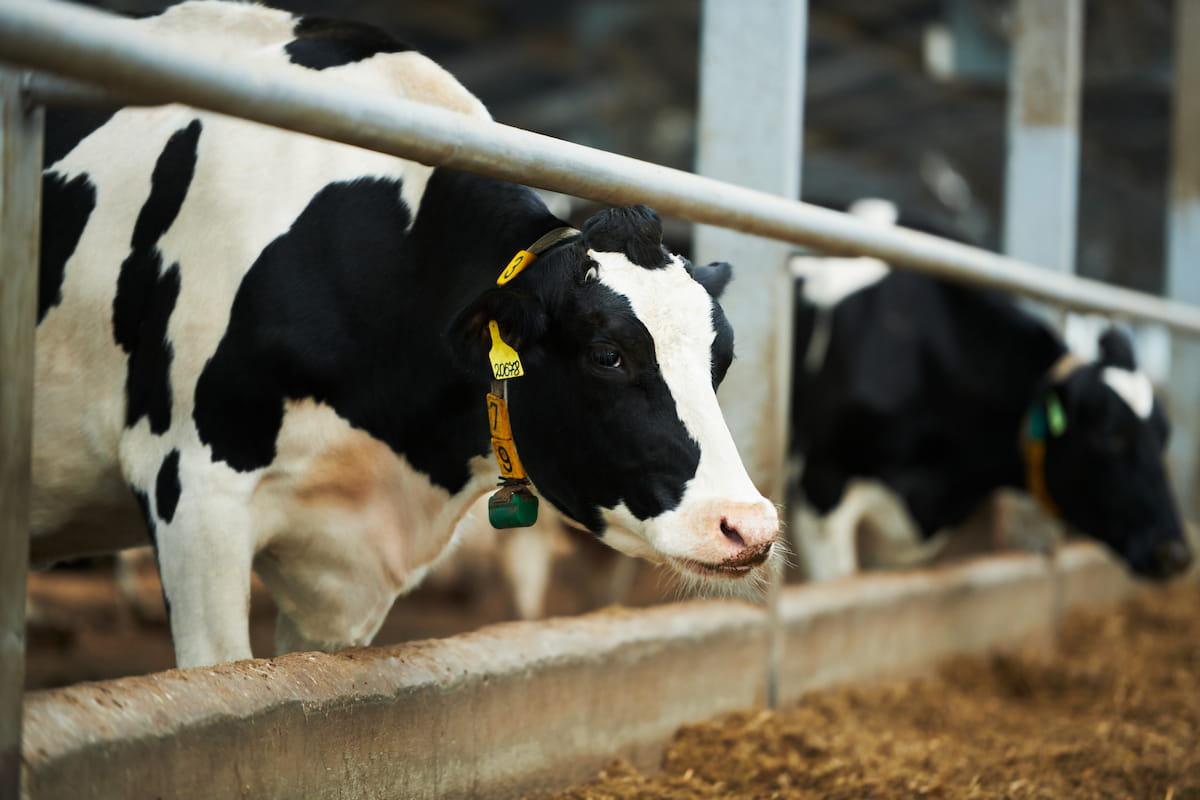
Potential for Growth and Sustainability in the Cattle Farming Industry
- Improved breeding programs – The implementation of better breeding programs and the introduction of superior genetic stock can lead to significant improvements in productivity and meat quality. The government and private sector can collaborate to establish nucleus breeding farms, which will serve as sources of quality breeding animals.
- Enhanced extension services – Providing cattle farmers with access to training, technical assistance, and support in areas such as animal health, nutrition, and breeding can improve the overall productivity and sustainability of the industry.
- Adoption of sustainable farming practices – Encouragement of sustainable and climate-resilient farming methods, such as rotational grazing, combined crop-livestock systems, and silvopasture, may help reduce climate change and boost industrial stability.
- Diversification and value addition – Encouraging the development of value-added products, such as processed meat products and dairy items, can help diversify the industry and increase its competitiveness in the market.
Role of Government and Private Sector Initiatives
- Government support – The Philippine government has introduced various programs and initiatives to support the cattle farming industry, such as the National Livestock Program, which aims to increase livestock production and improve food security. The Philippine Carabao Center, for instance, is actively engaged in research, development, and extension services related to dairy buffalo production.
- Private sector involvement – The private sector plays a crucial role in the growth of the cattle farming industry in the Philippines. Private companies are involved in various aspects of the industry, including breeding, feed production, processing, and marketing.
- Collaboration and partnerships – Public-private partnerships can help drive the development and growth of the cattle farming industry in the Philippines. These collaborations can facilitate sharing of resources, knowledge, and technology, resulting in more efficient and sustainable farming practices.
Profitability of Cattle Farming in the Philippines
Various factors, including the efficiency of farm management, the quality of breeding stock, and the prevailing market conditions, influence the profitability of cattle farming in the Philippines. With the country’s growing population and increasing demand for meat and dairy products, the potential for profitability in the sector remains high. In recent years, the government has actively promoted cattle farming through various programs and initiatives to enhance production, boost farm incomes, and improve overall profitability.
However, cattle farmers must adopt sustainable and efficient farming practices to maximize profitability. These include optimizing feed management, investing in quality breeding stock, and ensuring access to veterinary services. Additionally, cattle farmers can diversify their operations by venturing into value-added products, such as processed meat and dairy items.
In case you missed it: How to Start Gir Cow Farming in 10 Steps: Business Plan, Management, and Care
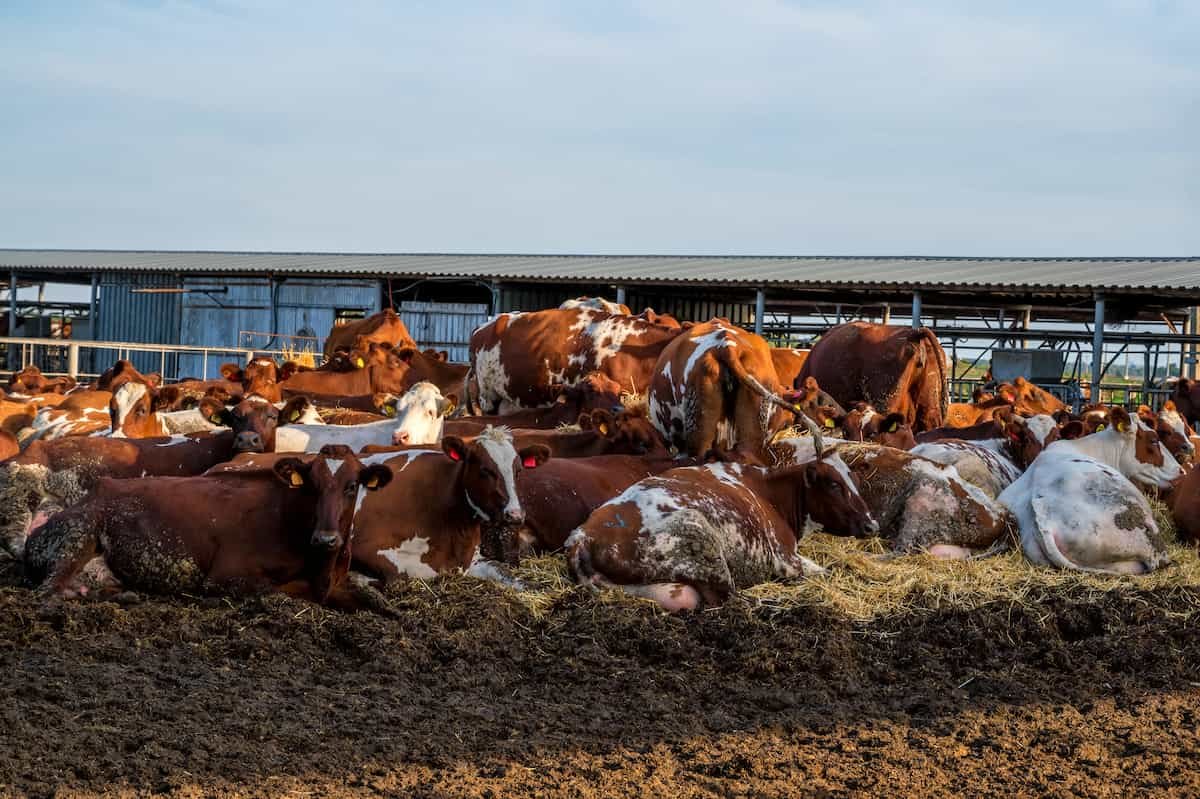
Cattle farming in the Philippines has significant potential for growth and sustainability. By addressing the challenges faced by the industry, such as limited access to quality breeding stock, poor nutrition and feed management, inadequate veterinary services, and the effects of climate change, the sector can continue to contribute to the nation’s food security and rural development.
- Feed Your Flock for Less: Top 10 Tips to Save on Chicken Feed
- Ultimate Guide to Ossabaw Island Hog: Breeding, Raising, Diet, and Care
- Hatching Answers: The Top 10 Reasons Your Chickens Aren’t Laying Eggs
- Eggs and Economics: Breaking Down the Cost of Raising Backyard Chickens
- Defend Your Greens: Proven Methods to Keep Iguanas Out of Your Garden
- Ultimate Guide to Cinnamon Queen Chicken: A Comprehensive Guide for Beginners
- Ultimate Guide to California Tan Chicken: Breeding, Raising, Diet, Egg-Production and Care
- Ultimate Guide to Marsh Daisy Chicken: Breeding, Raising, Diet, and Care
- 10 Types of Chicken Farming Businesses You Can Start for Profits
- Related Topics
- Dairy Farming
Leave a Reply Cancel reply
Save my name and email in this browser for the next time I comment.
How to Use Baking Soda for Treating Chlorosis in Plants
How to start salmon fish farming in 10 steps: diy guide for..., the best way to keep chickens laying eggs during the winter, easiest and best vegetables to grow in missouri: planting guide for winter,..., raising norfolk grey chickens: a complete guide to care, breeding, and benefits, how to grow oxalis tetraphylla: a step-by-step guide to planting and care, 10 common problems with coneflower plants: treatment, solutions, and troubleshooting, when to harvest butternut squash: signs, key indicators, and visual cues, 10 home remedies for fungal diseases in fruit trees: diy preparation steps, 10 common problems with garden-grown cabbage plants: treatment and solutions, how to apply for crop insurance in arunachal pradesh, 15 best apple picking farms in massachusetts (ma): top orchards for central,..., ultimate guide to classroom hydroponics program: setup, curriculum integration and maintenance, composition of coco peat: how to make, uses, dyi preparation guide, cauliflower disease resistant varieties: protecting your harvest with smart plant selection, hive components and assembly: a guide for beginners, how and when to fertilize celery plants: requirements and recommendation, stupice tomato overview: taste, size, history, origin, growing, and yield, how to treat brown spots on avocado tree leaves naturally: causes, fix..., how to grow and care for avocado in pots: a gardener guide..., drought prep 101: everything you need to know, a step-by-step guide to starting your own crab farm: cultivation process, 15 best plant nurseries in abu dhabi: top garden centers to buy all kinds of plants, how to use green chilli garlic mix as organic pesticide for your garden plants, top 10 fluffy chicken breeds to raise in your backyard, top 12 rock garden ideas for beginners: explained in simple steps.
- Privacy & Terms
© Copyright 2024, AgriculturalMagazine | All Rights Reserved.
Cattle Farming Business Plan Template
Written by Dave Lavinsky
Cattle Farming Business Plan
You’ve come to the right place to create your Cattle Farming business plan.
We have helped over 1,000 entrepreneurs and business owners create business plans and many have used them to start or grow their cattle farms.
Below is a template to help you create each section of your Cattle Farm business plan.
Executive Summary
Business overview.
Pleasant Hill Cattle Farm, located in Des Moines, Iowa, is a registered and licensed cattle farming company. The company operates a 500 acre farm that is home to over 300 cows, all of which are raised in an all-natural environment (no antibiotics, hormones, steroids, etc) and all animals are grass-fed. Pleasant Hill Cattle Farm is also fully equipped with the latest technology and equipment used in the cattle farming industry.
Pleasant Hill Cattle Farm is founded and run by Matthew Jones. Matthew has been a cattle farm operations manager for the past ten years, so he has in-depth knowledge and experience running a business in this industry. Matthew will run the general operations and administrative functions of the company and hire other employees to manage the sales and day-to-day operations.
Product Offering
Pleasant Hill Cattle Farm will be involved in the commercial breeding of cows to provide the following products:
- Ground Beef
Customer Focus
Pleasant Hill Cattle Farm will target all residents living in Des Moines, Iowa and the surrounding areas. We will also target supermarkets, restaurants, and other retailers who are interested in selling our products to the public.
Management Team
Pleasant Hill Cattle Farm’s most valuable asset is the expertise and experience of its founder, Matthew Jones. Matthew has been a cattle farm operations manager for the past ten years, so he has in-depth knowledge and experience running a business in this industry. Matthew will run the general operations and administrative functions of the company and hire other employees to manage the sales and day-to-day operations.
Success Factors
Pleasant Hill Cattle Farm will be able to achieve success by offering the following competitive advantages:
- Management: The company’s management team has years of business and marketing experience that allows them to market and serve customers in an improved and sophisticated manner than the competitors.
- Relationships: Having lived in the community for 20 years, Matthew Jones knows all of the local leaders, media, and other influencers. As such, it will be relatively easy for Pleasant Hill Cattle Farm to build brand awareness and an initial customer base.
- Quality products at affordable pricing: The company will provide quality products at affordable pricing, as it has high-quality equipment and uses the latest techniques.
- Good packaging: Pleasant Hill Cattle Farm will utilize product-oriented packaging materials that can reduce the damage in the products at the time of supply.
Financial Highlights
Pleasant Hill Cattle Farm is currently seeking $750,000 to start the company. The funding will be dedicated towards securing the farm land and purchasing the necessary equipment and supplies. Funding will also be dedicated towards three months of overhead costs to include payroll of the staff and marketing costs for the farm. The breakout of the funding is below:
- Land and Equipment: $250,000
- Cattle Care Supplies: $100,000
- Overhead Costs: $100,000
- Three Months of Overhead Expenses (Payroll, Rent, Utilities): $150,000
- Marketing Costs: $50,000
- Working Capital: $100,000
The following graph below outlines the pro forma financial projections for Pleasant Hill Cattle Farm.
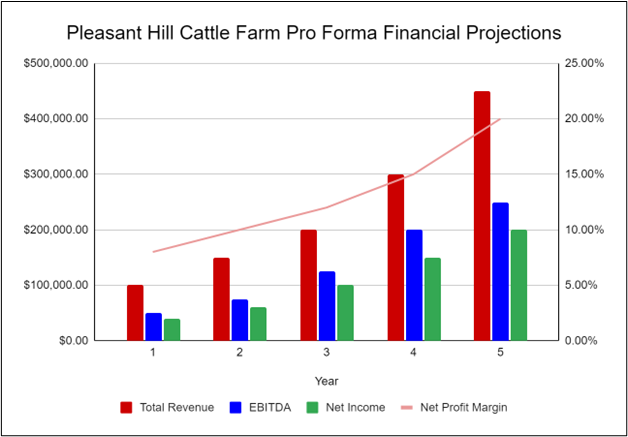
Company Overview
Who is pleasant hill cattle farm.
Pleasant Hill Cattle Farm is founded and run by Matthew Jones. Matthew has been a cattle farm operations manager for the past ten years, so he has in-depth knowledge and experience running a business in this industry. Matthew will run the general operations and administrative functions of the company and hire other employees to manage the sales and day-to-day operations.
Pleasant Hill Cattle Farm History
Matthew Jones is an entrepreneur who seeks to contribute to the growing US economy through cattle farming. Pleasant Hill Cattle Farm will become a recognized cattle farming company in Des Moines, Iowa, ensuring a continuous supply of cattle, milk, meat, and other dairy products.
Matthew has selected an initial location and is currently undergoing due diligence on it and the local market to assess if it is a suitable location for a commercial cattle farm.
Since incorporation, the company has achieved the following milestones:
- Found a farm location
- Developed the company’s name, logo, and website
- Determined supply requirements
- Began recruiting key employees
Pleasant Hill Cattle Farm Services
Industry analysis.
Pleasant Hill Cattle Farm competes against large-scale cattle farmers in the U.S. With the largest fed-cattle industry in the world, the United States is also the world’s largest producer of beef, primarily high-quality, grain-fed beef for domestic and export use. According to the USDA, beef cattle production in the US is one of the largest agricultural industries, making up 17% of the agricultural sector. Though the industry has declined slightly in the past few years, the market size of the Beef Cattle Production industry is expected to increase by 4.5% over the next five years.
Improving the living standards of the people in the country has resulted in a shift in meat preferences, with most choosing beef-based products rather than products derived from pork and chicken. This trend has helped increase revenues and allowed the industry to grow. However, the beef cattle production industry faces many challenges including droughts, the price of feed, and the increasing popularity of plant-based diets.
Customer Analysis
Demographic profile of target market.
Pleasant Hill Cattle Farm will primarily serve local residents and retailers of cattle dairy products and meat within a 30-mile radius of the farm. These businesses typically gross from $5 million to $10 million in annual revenues and source their supplies from within a 30-mile radius of their facilities.
The precise demographics for Des Moines, Iowa are:
Customer Segmentation
Pleasant Hill Cattle Farm will primarily target the following customer profiles:
- Grocery Stores
- Local Residents
Competitive Analysis
Direct and indirect competitors.
Pleasant Hill Cattle Farm will face competition from other companies with similar business profiles. A description of each competitor company is below.
Shayla Farms
Shayla Farms is one of the large-scale cattle farms in the US, owning an 8,000 ha area. It has well-established relationships with local retailers. It has been in business for 32 years. Shayla Farms offers good quality dairy products and meat. It also has automated equipment and machines, which helps in improving its operations. Moreover, it is also known for delivering large orders at the right time without delay.
Crimson Cattle Farm
Crimson Cattle Farm has been operating since 1995 and is a well-known company that provides good quality beef with affordable pricing as it has effective and efficient cattle rearing machines. It majorly targets local companies and retailers and has a large distribution network that can serve customers up to a 500-mile radius. Crimson Cattle Farm also has a very effective distribution and supply chain network. However, Crimson Cattle Farm’s offerings are only limited to beef.
Cattle USA has been in business for the past 50 years and enjoys great success. It is one of the largest beef producers in the 200-mile area. It easily caters to local residents primarily due to its prime location. It provides beef and a variety of dairy products including: cheese, yogurt, meat and milk.
Competitive Advantage
Pleasant Hill Cattle Farm will be able to offer the following advantages over their competition:
Marketing Plan
Brand & value proposition.
Pleasant Hill Cattle Farm will offer the unique value proposition to its clientele:
- Efficient and effective delivery network
- Good packaging
- Quality products at affordable pricing
- Providing excellent customer service and customer experiences
Promotions Strategy
The promotions strategy for Pleasant Hill Cattle Farm is as follows:
Social Media Marketing
Social media is one of the most cost-effective and practical marketing methods for improving brand visibility. The company will use social media to develop engaging content, such as sharing pictures of the cows and creating educational content about the cattle farm industry.
Website/SEO
Pleasant Hill Cattle Farm will develop a professional website that showcases pictures of the farm and the cows. It will also invest in SEO so that the company’s website will appear at the top of search engine results.
Word of Mouth/Referrals
Matthew Jones has built up an extensive list of contacts over the years by living and working in the midwestern farming industry. Since a number of local cattle farms have ceased operations, they have committed to Matthew that Pleasant Hill Cattle Farm will be their cattle supplier. They trust his work ethic and commitment to the local community.
Pleasant Hill Cattle Farm will highlight our location, cows, and products on a major billboard facing the busiest highway in town. The billboard will provide the location of Pleasant Hill Cattle Farm and the website URL.
Pleasant Hill Cattle Farm’s pricing will be moderate, so customers feel they receive great value when availing of the products. Pricing will be about 50% lower than retail prices to allow wholesalers and retailers to earn their margins.
Operations Plan
Operation Functions: The following will be the operations plan for Pleasant Hill Cattle Farm.
- Matthew Jones will be the Owner and President of the company. He will oversee all staff and manage client relations. Matthew has spent the past year recruiting the following staff:
- Sue Smith – will oversee all administrative aspects of running the cattle farm. This will include bookkeeping, tax payments, and payroll of the staff.
- George Baird– Head Farmhand who will oversee the farming staff and day to day operations.
- Ben Brown– Assistant Farmhand who will assist George.
- Frank White– Distribution Manager who will oversee the packaging and distribution of all products.
Milestones:
Pleasant Hill Cattle Farm will have the following milestones complete in the next six months.
- 6/202X – Finalize purchase of farm land
- 7/202X – Purchase farm equipment, supplies and materials
- 8/202X – Finalize contracts for grocery store, chain, and restaurant clients
- 9/202X – Purchase initial set of cows
- 10/202X – Hire and train farm staff
- 11/202X – Pleasant Hill Cattle Farm begins farm operations
Financial Plan
Key revenue & costs.
Pleasant Hill Cattle Farm’s revenues will come from the sales of cattle meat and dairy products to its customers. The major costs for the company will be the cost of land and equipment. The staff will earn competitive salaries allowing Pleasant Hill Cattle Farm to hire experienced workers. In the initial years, the company’s marketing spend will be high, as it establishes itself in the market.
Funding Requirements and Use of Funds
Key assumptions.
The following outlines the key assumptions required in order to achieve the revenue and cost numbers in the financials and pay off the startup business loan.
- Number of Cows: 300
- Average Revenue per Animal: $500
- Number of Products Sold Per Year: 100,000
Financial Projections
Income statement, balance sheet, cash flow statement, cattle farming business plan faqs, what is a cattle farming business plan.
A cattle farming business plan is a plan to start and/or grow your cattle farming business. Among other things, it outlines your business concept, identifies your target customers, presents your marketing plan and details your financial projections.
You can easily complete your Cattle Farming business plan using our Cattle Farming Business Plan Template here .
What are the Main Types of Cattle Farming Businesses?
There are a number of different kinds of cattle farming businesses , some examples include: Cow-calf, Backgrounding, Finishing, and Specific Breed.
How Do You Get Funding for Your Cattle Farming Business Plan?
Cattle Farming businesses are often funded through small business loans. Personal savings, credit card financing and angel investors are also popular forms of funding.
What are the Steps To Start a Cattle Farming Business?
Starting a cattle farming business can be an exciting endeavor. Having a clear roadmap of the steps to start a business will help you stay focused on your goals and get started faster.
1. Develop A Cattle Farming Business Plan - The first step in starting a business is to create a detailed cattle farming business plan that outlines all aspects of the venture. This should include potential market size and target customers, the services or products you will offer, pricing strategies and a detailed financial forecast.
2. Choose Your Legal Structure - It's important to select an appropriate legal entity for your cattle farming business. This could be a limited liability company (LLC), corporation, partnership, or sole proprietorship. Each type has its own benefits and drawbacks so it’s important to do research and choose wisely so that your cattle farming business is in compliance with local laws.
3. Register Your Cattle Farming Business - Once you have chosen a legal structure, the next step is to register your cattle farming business with the government or state where you’re operating from. This includes obtaining licenses and permits as required by federal, state, and local laws.
4. Identify Financing Options - It’s likely that you’ll need some capital to start your cattle farming business, so take some time to identify what financing options are available such as bank loans, investor funding, grants, or crowdfunding platforms.
5. Choose a Location - Whether you plan on operating out of a physical location or not, you should always have an idea of where you’ll be based should it become necessary in the future as well as what kind of space would be suitable for your operations.
6. Hire Employees - There are several ways to find qualified employees including job boards like LinkedIn or Indeed as well as hiring agencies if needed – depending on what type of employees you need it might also be more effective to reach out directly through networking events.
7. Acquire Necessary Cattle Farming Equipment & Supplies - In order to start your cattle farming business, you'll need to purchase all of the necessary equipment and supplies to run a successful operation.
8. Market & Promote Your Business - Once you have all the necessary pieces in place, it’s time to start promoting and marketing your cattle farming business. This includes creating a website, utilizing social media platforms like Facebook or Twitter, and having an effective Search Engine Optimization (SEO) strategy. You should also consider traditional marketing techniques such as radio or print advertising.
Learn more about how to start a successful cattle farming business:
- How to Start a Cattle Farm Business
- AI ASSISTANTS
Upmetrics AI Your go-to AI-powered business assistant
AI Writing Assist Write, translate, and refine your text with AI
AI Financial Assist Automated forecasts and AI recommendations
- TOP FEATURES
AI Business Plan Generator Create business plans faster with AI
Financial Forecasting Make accurate financial forecasts faster
Strategic Planning Develop actionable strategic plans on-the-go
AI Pitch Deck Generator Use AI to generate your investor deck
See how it works →
AI-powered business planning software
Very useful business plan software connected to AI. Saved a lot of time, money and energy. Their team is highly skilled and always here to help.
- Julien López
- BY USE CASE
Starting & Launching a Business Plan your business for launch and success
Validate Your Business Idea Discover the potential of your business idea
Secure Funding, Loans, Grants Create plans that get you funded
Business Consultant & Advisors Plan with your team members and clients
Business Schools & Educators Simplify business plan education for students
Students & Learners Your e-tutor for business planning
- Sample Plans
- WHY UPMETRICS?
Reviews See why customers love Upmetrics
Customer Success Stories Read our customer success stories
Blogs Latest business planning tips and strategies
Strategic Planning Templates Ready-to-use strategic plan templates
Business Plan Course A step-by-step business planning course
Ebooks & Guides A free resource hub on business planning
Business Tools Free business tools to help you grow
- 400+ Sample Business Plans
How to Start Cattle Farm Business – Step by Step Guide

Free Business Startup Checklist
Sudeshna Ray
- December 18, 2023
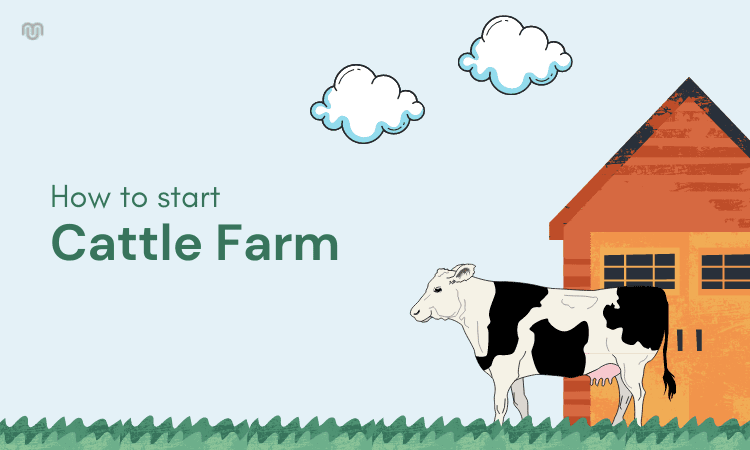
If you plan on starting a profitable business, then cattle farming can be an option for you.
You will require lots of funds and vast land to start this business. You can easily earn from either dairy products or even by selling animals on a large scale.
In case you are a beginner, here is a step-by-step guide for you about how to start with the cattle farm business , and by the end of this guide, you will be knowledgeable enough about how to go with your business and how to operate it successfully.
Steps to Start a Cattle Farming Business
Before we guide you step by step about your cattle farming business make sure that you have
- A sizeable area of land where you can shelter the animals
- Think about the particular breed of cattle you want
- A boundary wall or fence to protect the cattle
- Troughs made for feeding
- All types of equipment required for farming
- If possible, then a tractor
Once you are sure about these required items, you can move on to how to start your business. So, here we begin.
1. You Need a Business Plan to Start With!
Writing a business plan is essential, as it will help you out in sorting every aspect. Suppose you want your business plan to be right then. In that case, it must cover the cost of establishment, the cost of purchasing animals, the salary for the staff, the cost of cattle maintenance and their food, overheads, and the management of the pastures.
It would be best if you also kept planning regarding the situations of emergency so that it would not trouble you. Also, insurance purchasing for your animals will be a fruitful decision as you do not know what unforeseen occurrences you may encounter in the future. In a nutshell, a good business is one that will provide you with a solution when you are helpless.
2. Choosing a Location for the Farm
One of the most critical factors in cattle farming is selecting the ideal location for your business . Facilities like transportation and edible vegetation are very much required. It is best if you already have land, as purchasing may cost a lot.
Make sure to contact the office of local agriculture to have an idea about the vegetation, type of soil, rate of the stock market, capacity to carry pastures, demands of the market, and other criteria.
3. Purchasing of Machinery and Other Required Types of Equipment
You cannot just work with man labor as you require machine power to carry out specific tasks. Always regulate the size of your farm, the type of operation that you will be working on, the condition of your finance, and the facilities like- fencing, a shelter for cattle, feeding them, etc.
The bunks and watering facility is also required to be included.
4. Building Shelters for Your Cattle

The shelter is a mandatory factor for your cattle. To keep your cattle safe and secure, you have to build many parlors. In case you are planning on a dairy business, then you will require stanchions with parlors.
- Beef cattle require barns for themselves. You do not have to worry about them much.
- The water-providing source is required to keep your cattle hydrated and your pastures green.
- You may also require the installation of plumbing and other irrigation systems for your barn.
You will have to make stands that will hold the cows and other animals. Beef cattle do not require much maintenance, as just sheltering them is enough.
5. Decide the Purpose of Your Farm
Decide on the type of breed of cattle that you want to farm. The maintenance and budget differ for each breed, so plan accordingly. Most of the time, beginners start it with dairy products or beef.
Raising dairy cattle requires more maintenance and types of equipment in comparison to raising beef cattle. Sort it out before so that you do not get confused.
Select the breed that you want
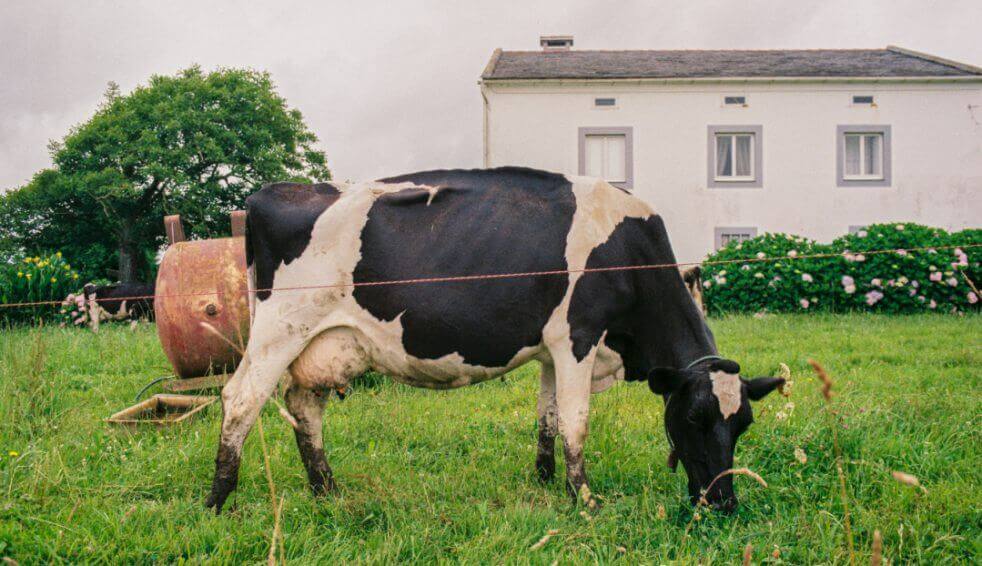
There are many cattle breeds that you can choose from. However, each cattle has its maintenance and advantages. However, always choose a breed that is readily available in your area. Do not choose something that may not be compatible with the vegetation or even the climatic condition. It is going to be your loss then.
Ayrshire, Jersey, Holstein, and Brown Swiss are some famous and common dairy cattle breeds. These are the breeds that are available almost everywhere.
In case you have decided to start beef cattle farming, you must choose those who are good in temperament and not intense. They must not be labor-intensive breeds like Galloway, British White, Hereford, Red Poll, and, Shorthorn. Angus is also the right choice. However, we would suggest you not go for them if you are a beginner. Their aggressive nature can cause a lot of problems.
However, you can also choose both breeds of beef and milk. It is how you prefer.
Purchasing of Cattle
Once you are settled with the purpose of your farm and also the type of breed, the next step is to buy the cattle. You can do this from any livestock present near you, or you can search online about the places where you can buy them.
While purchasing the cattle, check that they have traits like mothering ability, conformation that is great, and convertibility of temperament forage. Do not make haste and buy all of them in one go! Make sure to check all these traits, and buy only the favorable ones. Do not buy the ones that look thin and weak.
If you have a tight budget and you are planning to wait for two or more years, then Heifer can be an excellent option to go with. Do not buy a bull until and unless you have ten cows in your herd.
Artificial insemination breeding is better when you deal with such cases.
Animal Feeding
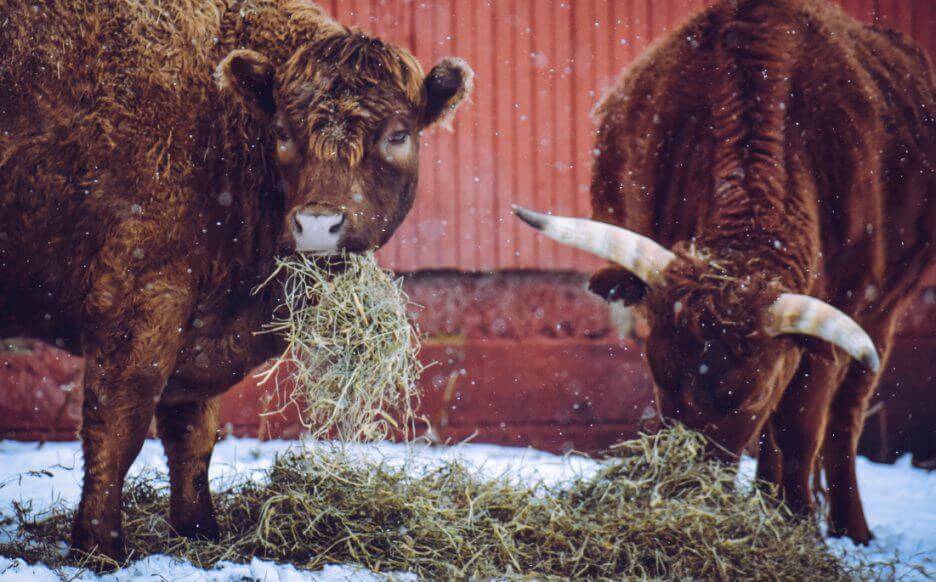
Whether you are doing business with dairy cattle or beef cattle, feeding them is very necessary. The quality of feeding should be of very high quality. They must stay healthy. Producing your feed for the cattle is an excellent option. However, you have to determine the amount of pasture that you might need for your cattle.
Please produce your hay, as buying it from another dealer may turn out to be expensive. As feeding your cattle may cost a lot, you have to be mentally prepared for all of these.
6. Taking Great Care of Your Animals
You also have to tend to the animal’s health and hygiene. You have to tend them with a lot of food and care so that they can stay all right.
Always call up a nutritionist, veterinarian, or other professionals
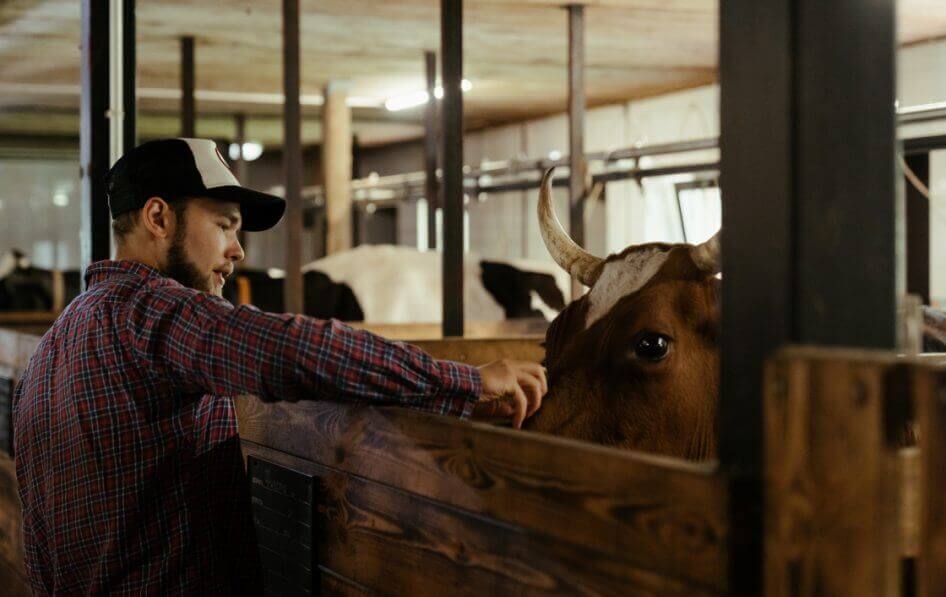
If you are involved in dairy cattle, then you have to take a lot of care. A good veterinarian or a nutritionist can help you out in keeping your cattle healthy. Calves are to be vaccinated annually right after they take birth. Also, seek advice from your nutritionist regarding the food that you will feed your cattle. Do maintain good relationships with these people.
- If you are buying your feed from someone, then make sure that you keep buying from that person only. Be good friends with them so that you can also get the right quality products for your cattle.
- Keep good contact with your farming organizations and neighbors. They can help you with the resources that you may require for your farm.
Make a place for waste management and compost for cow manure
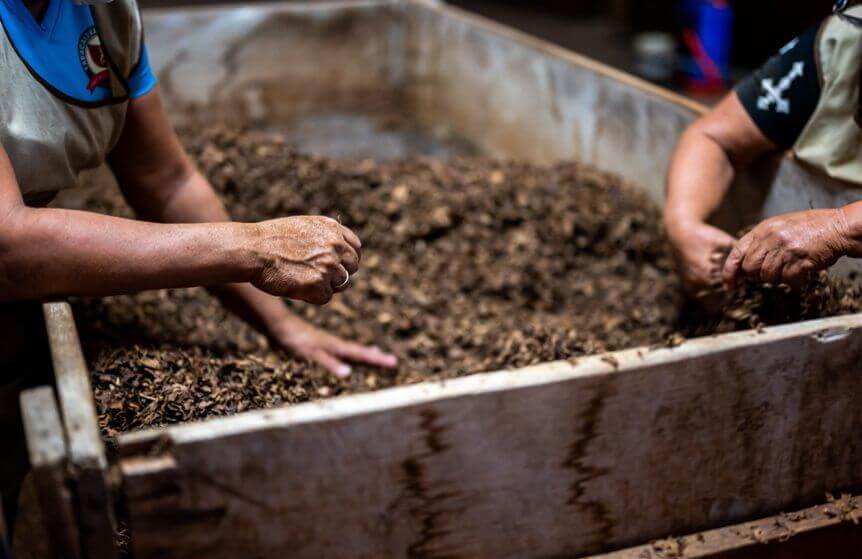
To put back proper nutrients in your pasture, you can use cow manure. Use it for the better, as unattended manure may attract flies and parasites that may create an unhygienic environment for your cattle. You can also use cow manure as fertilizer by storing them for months.
- Make a disposal plan for the manure, in case you do not want to make your compost.
- Do follow the laws if there are any. Some areas have rules and laws regarding compost.
Maintain records regarding your animals
Keep a record of all the finances, vaccinations, breeding, calving, purchases, sales, and every other important aspect of your operation. It is mandatory in some places to keep a record of your cattle herding.
You may even require some radio frequency tag for every animal that you purchase, sell, or even the newborns.
Always keep a clear mind about what you want to achieve. For a beginner, it might be a straining and exhausting procedure to do all these. But don’t deviate from your plan, and follow the steps for being successful.
Be sure to set up your farm with every piece of equipment like-fences, water systems, and barns before bringing in your cattle. Do not make haste while purchasing any equipment. Only purchase what you need. Make sure to complete all the paperwork and the permission issues regarding your work. Once you are all set, you can start operating your business.
The Quickest Way to turn a Business Idea into a Business Plan
Fill-in-the-blanks, AI-assistance, and automatic financials make it easy.

About the Author

Avid writer and content marketer, Sudeshna Ray, has created content for diverse premises including technical niches, business and marketing, finances, creative character sketches, and much more. Engineer-turned-Writer-turned-Marketer, she has explored several aspects of performance, lead generation and establishing a brand presence in the digital domain.
Related Articles

How to Write an Effective Company Overview for Your Business Plan
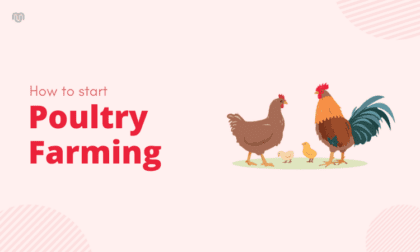
How to Start Poultry Farming Business – Step by Step Guide

How to Write a Customer Analysis Section for Your Business Plan
Reach your goals with accurate planning.
No Risk – Cancel at Any Time – 15 Day Money Back Guarantee
Popular Templates

- Latest News
- The Economy
- Vantage Points

AGRITRENDS: Raising cattle for meat is profitable
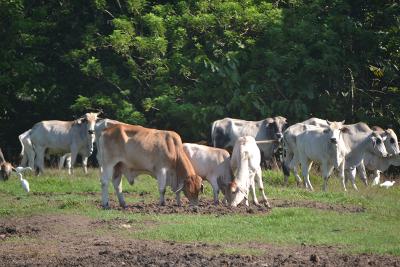
Cattle — colloquially cows — are the most common type of large domesticated animals. They are raised as livestock for meat (beef and veal), as dairy animals for milk and other dairy products, and as draft animals (oxen or bullocks that pull carts, plows and other implements). Other products include leather and dung for manure or fuel.
In the Philippines, raising cattle is not a popular income-generating project despite the high marketability of beef, the cattle meat. As a matter of fact, cattle farmers are found only in Batangas, Tarlac, Pangasinan, Masbate, Mindoro, Iloilo and Cotabato.
But in recent years, cattle fattening has gained prominence as an important business project of the livestock industry. It gives the farmer year-round work and provides him with extra income while engaging in his non-agricultural occupation. He does not spend money on feeds. After all, he can give them those cheap, plentiful farm by-products such as corn stovers, rice straw, copra meal, rice bran and sugarcane tops, which ordinarily go to waste.
Losses are also minimal. Cattle are less prone to diseases and parasites since they are confined and the fattening period is short. It takes only 120-180 days to fatten the cattle of feeder stock for the market. At this point, the animal already weighs 275-325 kilograms and is ready for slaughter.
“Backyard cattle fattening or on a large scale can be profitably undertaken,” says the Department of Agriculture (DA). “It consists of buying healthy stock, feeding and fattening them for 120 to 180 days, and selling them at any time of the year. Minimum space for housing is required: 1.5 to 2 square meters per head for a sheltered feeding area, and 5 meters per head for a fenced loafing area.”
There are several breeds of cattle to choose from. The most common is the indigenous cattle breed found throughout the country. It is a small breed with mature bulls weighing about 400 kilograms and mature cows weighing about 300 kilograms. The color ranges from grey to brown to fawn, with white spotting on some animals. Four breed types have been recognized, the Ilocos in northern Luzon, Batangas in southwestern Luzon, Iloilo on Panay and Batanes on the Batanes Islands between Luzon and Taiwan.
Other breeds found in the country are Ongole, Nellore, Brahman, Angus, Beefalo, Beemaster, Belmont Red, Indu-Brazil, Brahford, Brangus, Charbray, Charolais, Chianina, Droughtmaster, Galloway, Limousin, Santa Gertrudis, Shorthorn, Simbrah, Simmental and Grauvieh.
Some breeds, like the Holstein-Friesian, Jersey, Sahiwal, Red Sindhi, Tharparkar, and Brown Swiss, may be raised not only for their meat but also for milk.
To make profit and produce good meat, raisers are advised to consider the following points: age, gender, breed and health.
Age: The DA recommends two to three year- old animals. “They need less feed for every unit of weight gain because they digest more efficiently and consume a larger volume of feed in proportion to body weight,” it explains. “Younger animals cost less because of lesser weight. They require longer periods of feeding and higher feed quality to reach the desired finish.”
But older feeder stock (4 years and above) also have their advantages. “They need less time in the feedlot and will eat a wider variety of feed and roughage than young stock,” the DA says. “If nutritious feed is abundant, younger cattle are generally more economical to fatten. If only roughage and plant by-products are available, older stocks are preferable.”
Gender: The agriculture department suggests steers (castrated males) than heifers (unbred females) because the former are readily available and easier to manage. “Steers also gain weight and grow faster than heifers,” it adds.
Breeds: Several breeds have been mentioned earlier, but DA recommends improved breeds and crossbreeds as they gain weight faster than native animals. Tropical breeds are more adaptable to local climatic and feed conditions than temperate breeds.
The DA also goes for tropical breeds: Brahman, Ongole or Nellore, Indu-Brazil, and Batangas cattle. The color of Brahman is silver gray although some are reddish. This breed is resistant to diseases and can withstand heat better. White is the color of Ongole or Nellore. The bulls may have dark gray head, neck and hump. Knees may be black.
The colors of Indu-Brazil vary from light to silver gray and brownish dark gray to red. The Batangas cattle is called so because of the Batangas beef, which has become popular due to its good quality cattle and produced by the “supak” method of Batangas.
Health condition: A healthy animal is alert and active, has bright eyes, smooth haircoat and moist muzzle. Animals with rough skin and those which are blind and lame should be avoided.
In addition, the animals should have been properly vaccinated against common diseases before bringing them to the feedlot. If not, they must be referred to the nearest Bureau of Animal Industry office for vaccination against hoof-and-mouth disease and hemorrhagic septicemia.
Likewise, the animal must have a fecal examination to find appropriate deworming drugs. It is necessary to control external parasites with the right spray for ticks, lice and flies.
Other traits or characters that must be considered, according to the book, Profitable Beef Cattle Management Practices, are: size and conformation (physical appearance), average daily gain, rate of maturity (attaining a given or definite weight in the shortest possible time), beef value (dressing percentage), grazing ability, market value (carcass quality), fertility (calving intervals), disease resistance, weaning weight, heat tolerance (ability to withstand heat in the open) and birth weight.
“When buying cattle, it is cheaper to do so during the dry season (January to April),” Agribusiness Opportunities suggests. “Better road conditions make it easier to transport the animals during this period.”
Rearing and feeding
Here are more suggestions from the book on rearing and feeding:
The first few weeks in the feedlot are critical. Start the calves with roughage having a limited amount of concentrate, gradually increasing the volume of the mixture. A calf consumes about 3% of its body weight. Which means the ideal feed must have 12-14% moisture content under ordinary conditions.
Rations differ from region to region depending on available feeding materials. Different kinds of concentrates are possible with copra meal, rice bran, sugarcane tops, pineapple, or papaya leftovers mixed with molasses. (Molasses which makes the feed more appetizing is a good source of energy.)
Forage — grasses and legumes — is a good feed supplement. Cattle can be given as much roughage, hay, rice bran and molasses as they want.
Clean, drinking water for the animals is provided all the time. Rations should also include salt at the rate of 3-5 grams per head daily.
An effective method used by Batangas raisers is force-feeding (supak). In this method, which is used in addition to roughage feeding, the animal is force-fed with the following mixture: 15-20 kilograms of fresh ipil-ipil leaves (finely chopped and pounded), half kerosene can of clean water and a little salt.
Some raisers include urea in the feeding program as non-protein supplement for ruminants. It must be remembered, however, that only recommended amounts should be given to the cattle because any excess is toxic to the animal.
Confine the animal to its feeding area so that it uses less energy and gains weight quickly. However, it can be tethered in grassy areas and exposed to sunlight for short periods.
The cattle must be washed at least once a week.
Proper housing is important in successful cattle fattening operation, the DA says. Adequately protect animals against the adverse effects of weather when they are raised in relatively small areas. Animals in backyard cattle farms are usually tethered along roadsides and in backyards during the day and confined in a shed or corral at night.
The permanent type of housing consisting of GI roofing, timber frames, concrete floor, feed trough and water troughs are used in most farms. The shelter is open-sided and is located near the farmer’s house or under the shade trees. Building height ranges from 1.7 to 1.9 meters while the width varies from 2.1 to 2.7 meters. Each animal can be allocated 1.5 to 4.5 square meters.
Current marketing system of beef cattle is now becoming efficient especially in areas where there is a livestock auction market.
However, a number of middlemen are still involved in the system, thus creating a little complex marketing channel. In areas where there is no livestock auction market, the usual channel of distribution is set up in this order: barrio agents, shippers, Manila-based buyers, and meat retailers.
Marketing efficiency can be improved by reducing the number of stages in market channels. This can be done by encouraging direct selling from producers to butcher-retailers or processors.
RELATED ARTICLES MORE FROM AUTHOR
Agritrends | seaweed: discovering its export potentials, agri trends: the many uses of earthworms, agri trends: tobacco is not just for smoking, agritrends: partnering with filipino farmers on how grow, process coffee profitably, agritrends | kids who farm: making farming fun and easy for children, agritrends: bringing back the golden days of coconut industry, leave a reply cancel reply.

Livestock Farming Business Plan Template
Written by Dave Lavinsky

Livestock Farming Business Plan
Over the past 20+ years, we have helped over 500 entrepreneurs and business owners create business plans to start and grow their livestock farming companies. We have the experience, resources, and knowledge to help you create a great business plan.
In this article, you will learn some background information on why business planning is important. Then, you will learn how to write a livestock farming business plan step-by-step so you can create your plan today.
Download our Ultimate Business Plan Template here >
What is a Livestock Farm Business Plan?
A business plan provides a snapshot of your livestock farming business as it stands today, and lays out your growth plan for the next five years. It explains your business goals and your strategies for reaching them. It also includes market research to support your plans.
Why You Need a Business Plan for a Livestock Farm
If you’re looking to start a livestock farming business or grow your existing livestock farming company, you need a business plan. A business plan will help you raise funding, if needed, and plan out the growth of your livestock farming business to improve your chances of success. Your livestock farming business plan is a living document that should be updated annually as your company grows and changes.
Sources of Funding for Livestock Farming Businesses
With regards to funding, the main sources of funding for a livestock farming business are personal savings, credit cards, bank loans, and angel investors. When it comes to bank loans, banks will want to review your business plan (hand it to them in person or email to them as a PDF file) and gain confidence that you will be able to repay your loan and interest. To acquire this confidence, the loan officer will not only want to ensure that your financials are reasonable, but they will also want to see a professional plan. Such a plan will give them the confidence that you can successfully and professionally operate a business. Personal savings and bank loans are the most common funding paths for livestock farming companies.
Finish Your Business Plan Today!
How to write a business plan for a livestock farming business.
If you want to start a livestock farming business or expand your current one, you need a business plan. The guide and sample below details the necessary information for how to write each essential component of your livestock farming business plan.
Executive Summary
Your executive summary provides an introduction to your business plan, but it is normally the last section you write because it provides a summary of each key section of your plan.
The goal of your executive summary is to quickly engage the reader. Explain to them the kind of livestock farming business you are running and the status. For example, are you a startup, do you have a livestock farming business that you would like to grow, or are you operating several family-owned livestock farming businesses?
Next, provide an overview of each of the subsequent sections of your plan.
- Give a brief overv iew of the livestock farming industry.
- Discuss the type of livestock farming business you are operating.
- Detail your direct competitors. Give an overview of your target customers.
- Provide a snapshot of your marketing strategy. Identify the key members of your team.
- Offer an overview of your financial plan.
Company Overview
In your company overview, you will detail the type of livestock farming business you are operating.
For example, you m ight specialize in one of the following types of livestock farming businesses:
- Cattle Ranching : In order to effectively raise cattle until market-ready, ranchers must have enough land for cattle to roam and eat grass. The rancher must also provide supplemental food, medicines and a number of procedures to ensure cattle sent to market are healthy and at an optimum weight.
- Sheep Farming: Sheep farming is a process of maintaining order in the herd and corralling sheep when necessary. Farmers must feed and medicate sheep efficiently and they use sheep dogs to assist in many daily efforts. Sheep are prized for their wool and may be sent to slaughter as lambs if they are young. Sheep are often used on vacant fields to graze with an environmentally-friendly outcome.
- Chicken Farming: Chicken farmers need to provide water, food and medications to raise chickens until market-ready. Chickens may be free-range or kept in sheds during growth cycles. While hens produce eggs, roosters provide barnyard protection and enjoyment.
- Hog Farming: Hogs are notoriously expensive to raise, primarily due to food costs and medications; however, they demand high prices at sale and produce generous profits when sent to market. Hogs are grown in pens to control weight gain and are carefully assessed for market-readiness.
In addition to explaining the type of livestock farming business you will operate, the company overview needs to provide background on the business.
Include answers to questions such as:
- When and why did you start the business?
- What milestones have you achieved to date? Milestones could include the number of cattle sold each season, the number of sheep successfully shorn each year, reaching X number of ranches owned, etc.
- What is your legal business structure? Are you incorporated as an S-Corp? An LLC? A sole proprietorship? Explain your legal structure here.
Industry Analysis
In your industry or market analysis, you need to provide an overview of the livestock farming industry. While this may seem unnecessary, it serves multiple purposes.
First, researching the livestock farming industry educates you. It helps you understand the market in which you are operating.
Secondly, market research can improve your marketing strategy, particularly if your analysis identifies market trends.
The third reason is to prove to readers that you are an expert in your industry. By conducting the research and presenting it in your plan, you achieve just that.
The following questions should be answered in the industry analysis section of your livestock farming business plan:
- How big is the livestock farming industry (in dollars)?
- Is the market declining or increasing?
- Who are the key competitors in the market?
- Who are the key suppliers in the market?
- What trends are affecting the industry?
- What is the industry’s growth forecast over the next 5 – 10 years?
- What is the relevant market size? That is, how big is the potential target market for your livestock farming business? You can extrapolate such a figure by assessing the size of the market in the entire country and then applying that figure to your local population.
Customer Analysis
The customer analysis section of your livestock farming business plan must detail the customers you serve and/or expect to serve.
The following are examples of customer segments: corporate buyers, stockyard owners, and individual buyers.
As you can imagine, the customer segment(s) you choose will have a great impact on the type of livestock farming business you operate. Clearly, individuals would respond to different marketing promotions than stockyard owners, for example.
Try to break out your target customers in terms of their demographic and psychographic profiles. With regards to demographics, including a discussion of the ages, genders, locations, and income levels of the potential customers you seek to serve.
Psychographic profiles explain the wants and needs of your target customers. The more you can recognize and define these needs, the better you will do in attracting and retaining your customers. Ideally you can speak with a sample of your target customers before writing your plan to better understand their needs.
Finish Your Livestock Farming Business Plan in 1 Day!
Don’t you wish there was a faster, easier way to finish your business plan?
With Growthink’s Ultimate Business Plan Template you can finish your plan in just 8 hours or less!
Competitive Analysis
Your competitive analysis should identify the indirect and direct competitors your business faces and then focus on the latter.
Direct competitors are othe r livestock farming businesses.
Indirect competitors are other options that customers have to purchase from that aren’t directly competing with your product or service. This includes specialty types of beef cattle, such as organic or grass-fed, imported lamb or beef, or eggs that are infused with additional supplements. You need to mention direct competition, as well.
For each direct competitor, provide an overview of their business and document their strengths and weaknesses. Unless you once worked at your competitors’ businesses, it will be impossible to know everything about them. But you should be able to find out key things about them such as
- What types of customers do they serve?
- What type of livestock farming business are they?
- What is their pricing (premium, low, etc.)?
- What are they good at?
- What are their weaknesses?
With regards to the last two questions, think about your answers from the customers’ perspective. And don’t be afraid to ask your competitors’ customers what they like most and least about them.
The final part of your competitive analysis section is to document your areas of competitive advantage. For example:
- Will you provide lower rates for stockyards despite fluctuating higher market prices?
- Will you offer beef cuts that your competition doesn’t?
- Will you provide better customer service?
- Will you offer better pricing?
Think about ways you will outperform your competition and document them in this section of your plan.
Marketing Plan
Traditionally, a marketing plan includes the four P’s: Product, Price, Place, and Promotion. For a livestock farming business plan, your marketing strategy should include the following:
Product : In the product section, you should reiterate the type o f livestock farming company that you documented in your company overview. Then, detail the specific products or services you will be offering. For example, will you provide uncured, smoked ham and bacon, pasteurized eggs, or free-range chicken?
Price : Document the prices you will offer and how they compare to your competitors. Essentially in the product and price sub-sections of yo ur plan, yo u are presenting the livestock you offer and their prices.
Place : Place refers to the site of your livestock farming company. Document where your company is situated and mention how the site will impact your success. For example, does your cattle ranch contain grassy acreage, allowing cattle to eat naturally? Is your chicken ranch situated in a weather-friendly environment? Does your hog farm contain heated and cooled hog pens for the well-being of the hogs?
Promotions : The final part of your livestock farming marketing plan is where you will document how you will drive potential customers to your location(s). The following are some promotional methods you might consider:
- Advertise in local papers, radio stations and/or magazines
- Reach out to regional stockyards
- Distribute farmer newsletters to stockyards
- Engage in email marketing
- Advertise on social media platforms
- Improve the SEO (search engine optimization) on your website for targeted keywords
Operations Plan
While the earlier sections of your business plan explained your goals, your operations plan describes how you will meet them. Your operations plan should have two distinct sections as follows.
Everyday short-term processes include all of the tasks involved in running your livestock farming business; including caring for livestock, securing and maintaining food supplies and medications, planning transport to market, invoicing customers and paying bills.
Long-term goals are the milestones you hope to achieve. These could include the dates when you expect to ship-to-market, or when you hope to reach $X in revenue. It could also be when you expect to expand your livestock farming business to a new ranch or farm.
Management Team
To demonstrate your livestock farming business’ potential to succeed, a strong management team is essential. Highlight your key players’ backgrounds, emphasizing those skills and experiences that prove their ability to grow a company.
Ideally, you and/or your team members have direct experience in managing livestock farming businesses. If so, highlight this experience and expertise. But also highlight any experience that you think will help your business succeed.
If your team is lacking, consider assembling an advisory board. An advisory board would include 2 to 8 individuals who would act as mentors to your business. They would help answer questions and provide strategic guidance. If needed, look for advisory board members with experience in managing a livestock farming business or successfully running a livestock stockyard.
Financial Plan
Your financial plan should include your 5-year financial statement broken out both monthly or quarterly for the first year and then annually. Your financial statements include your income statement, balance s heet, and cash flow statements.
Income Statement
An income statement is more commonly called a Profit and Loss statement or P&L. It shows your revenue and then subtracts your costs to show whether you turned a profit or not.
In developing your income statement, you need to devise assumptions. For example, will you ship 500,000 head of cattle this season, or will you expand your farm by several hundred acres? And will sales grow by 2% or 10% per year? As you can imagine, your choice of assumptions will greatly impact the financial forecasts for your business. As much as possible, conduct research to try to root your assumptions in reality.
Balance Sheets
Balance sheets show your assets and liabilities. While balance sheets can include much information, try to simplify them to the key items you need to know about. For instance, if you spend $50,000 on building out your livestock farming business, this will not give you immediate profits. Rather it is an asset that will hopefully help you generate profits for years to come. Likewise, if a lender writes you a check for $50,000, you don’t need to pay it back immediately. Rather, that is a liability you will pay back over time.
Cash Flow Statement
Your cash flow statement will help determine how much money you need to start or grow your business, and ensure you never run out of money. What most entrepreneurs and business owners don’t realize is that you can turn a profit but run out of money and go bankrupt.
When creating your Income Statement and Balance Sheets be sure to include several of the key costs needed in starting or growing a livestock farming business:
- Cost of breeder chickens, lambs, farrow pigs or calves
- Cost of farming equipment and vehicles
- Payroll or salaries paid to staff
- Business insurance
- Other start-up expenses (if you’re a new business) like legal expenses, permits, computer software, and equipment
Attach your full financial projections in the appendix of your plan along with any supporting documents that make your plan more compelling. For example, you might include your ranch deed of ownership or a list of buyers you partner with in buying and selling operations.
Writing a business plan for your livestock farming business is a worthwhile endeavor. If you follow the template above, by the time you are done, you will truly be an expert. You will understand the livestock farming industry, your competition, and your customers. You will develop a marketing strategy and will understand what it takes to launch and grow a successful livestock farming business.
Livestock Farming Business Plan FAQs
What is the easiest way to complete my livestock farming business plan.
Growthink's Ultimate Business Plan Template allows you to quickly and easily write your livestock farming business plan.
How Do You Start a Livestock Farming Business?
Starting a livestock farming business is easy with these 14 steps:
- Choose the Name for Your Livestock Farming Business
- Create Your Livestock Farming Business Plan
- Choose the Legal Structure for Your Livestock Farming Business
- Secure Startup Funding for Your Livestock Farming Business (If Needed)
- Secure a Location for Your Business
- Register Your Livestock Farming Business with the IRS
- Open a Business Bank Account
- Get a Business Credit Card
- Get the Required Business Licenses and Permits
- Get Business Insurance for Your Livestock Farming Business
- Buy or Lease the Right Livestock Farming Business Equipment
- Develop Your Livestock Farming Marketing Materials
- Purchase and Setup the Software Needed to Run Your Livestock Farming Business
- Open for Business
Where Can I Download a Free Business Plan Template PDF?
Click here to download the pdf version of our basic business plan template.
Our free business plan template pdf allows you to see the key sections to complete in your plan and the key questions that each must answer. The business plan pdf will definitely get you started in the right direction.
We do offer a premium version of our business plan template. Click here to learn more about it. The premium version includes numerous features allowing you to quickly and easily create a professional business plan. Its most touted feature is its financial projections template which allows you to simply enter your estimated sales and growth rates, and it automatically calculates your complete five-year financial projections including income statements, balance sheets, and cash flow statements. Here’s the link to our Ultimate Business Plan Template.
Don’t you wish there was a faster, easier way to finish your Livestock Farming business plan?
OR, Let Us Develop Your Plan For You
Since 1999, Growthink has developed business plans for thousands of companies who have gone on to achieve tremendous success. Click here to learn about Growthink’s business plan writing services .

Other Helpful Business Plan Articles & Templates

- Fri. May 24th, 2024
Business Diary Philippines
Small business startup ideas and money making guide
Small-scale Cattle Production – Cattle Raising in the Philippines
Cattle raising in the Philippines. Small-scale cattle production guide.
In the Philippines, between 75 and 90 percent of the total cattle production are raised in backyard systems. Small scale cattle production offers many benefits.
Raising cattle on the farm helps to promote integration with crops, trees and soil and nutrient cycling is facilitated. Crop residues not suited for human consumption can be converted to food such as milk and meat. Waste in the form of manure can also be incorporated to the soil to fertilize high-value crops. Generally, between one and five heads of cattle are raised by farmers in backyard systems.
The most common limiting factor in backyard cattle production is the poor quality, of feed and or inadequate feed. Grasslands and native pastures only provide fodder for the maintenance of animals and not for improved reproduction or performance. Feed quality, not quantity alone, is critical in cattle feeds and feeding.
Selection of feeder stock
Zeb-breed grade bulls or steers which weigh approximately 180 kg and are between three years of age are preferred as feeder animals. At this age, the rate of growth is faster and more efficient, so that the desired market weight of 275 kg can be easily reached in a shorter fattening period. A daily rate of gain of between 0.5 to 0.8 kg can be expected, especially if enough feeds of sufficient quality can be provided. The health condition of the animal is determined by its bright eyes, soft smooth hair coat and moist muzzle. Avoid blind or lame animals with rough skin and long dull hair. The animals should be square-shaped, with well-sprung ribs and straight legs.
Production practices
Tethering or Staking -This is one of the most common methods of raising cattle by small farmers who have a few head of cattle. The animals need to be moved several times throughout the day.
Unfortunately, the wide- spread mono-cropping and large-scale production of cash crops have resulted in the reduction or loss of pasture areas formerly allotted for tethering of animals.
Stall Feeding or Zero Grazing – Also known as Cut and Cany System. Animals are completely confined in stalls. Feed is carried to them and fed in the stall.
This practice promotes wise use of land. Pasture areas can be divided into a cash crop production area and a forage production area thus income generation can be derived from crops and livestock. Nutrient cycling can also be enhanced
Cattle sheds are usually constructed using local materials such as bamboo, nipa and coco lumber. A 1.5-sq m area (0.75 m × 2 m) per animal is necessary for shelter. A 5-sq m fenced area for exercise is advisable. If possible, the shed flooring should be cemented or elevated for good drainage and easier removal of manure. The roof of the shed should be at least 3 m high. Feeding troughs and waterers should be provided.
If complete confinement of several animals will be practiced, as in the zero grazing, each stall should measure 1.5 × 4 m which can accommodate the feeder stock during the entire fattening period.
Additional information on feeding fatteners
The primary and most cost-effective source of feed for cattle is quality forage or roughage. Farm wastes such as com stover, rice straw and sugar cane tops are usually given together with some concentrates. Good quality grass usually contains eight percent crude protein on a dry matter basis; growing feeder stock need about 12 percent for normal growth. A grass-legume mixture would be better since legumes contain about 20 percent crude protein and have a high calcium value. On the average, cattle consume feed dry matter (lees water) at a level of two percent of its body weight. The percentage is higher for young animals and decreases as the animal matures. For example, a 300-kg animal is expected to consume about 6 kg dry matter of feed per day or roughly 24 kg fresh forage.
Since feeding roughage may not be adequate to supply the required energy and protein for fattening, it is necessary. to add concentrates in the diet at the rate of 1 to 1.5 percent of the animal body weight. Concentrates can either be formulated and mixed in the farm or purchased off-farm. Molasses, a good source of energy, is usually added to the ration to increase palatability. Rations containing 15-25 percent concentrate and 75-85 percent roughage have been found to be satisfactory in promoting good daily weight gain. One half of the ration should be given in the morning; the other half in the afternoon. The ration to be fed to the animal will also depend on the size of the animal at the time they are purchased and the desired final weight. Ordinary salt (30 to 50 gms/day/head) and good quality water should be provided at all times. Newly purchased feeder stock should be gradually introduced to the concentrate diet.
Do you know that…
* Annually, one head of cattle excretes 60 kilograms Nitrogen, four kilograms Phosphorus and 18 kilograms Potassium. * A cow reaches puberty at the age of 18 months and has a gestation period of 283 days. Estrous cycle is 18 – 24 days. * Cattle can be used in transporting farm products to and from markets and to transport fuel, water and goods. * It takes about 1,000 days to breed and raise cattle to the butchering weight of 400-500 kilograms. * On an average, Filipinos consume two kilograms of beef per year as the country’s cattle supply drops continuously.
Source: nzdl.org
Related posts:

Related Post
Meeting consumer demand for organic meat: a smart business move, low-cost livestock technology, raising goats for milk, 3 thoughts on “small-scale cattle production – cattle raising in the philippines”.
It is crucial because feeding roughage would not be sufficient to provide the necessary protein and calories for fattening. Thank you!
Grasslands and native pastures supply only enough feed to keep animals alive, not enough to promote reproduction or performance. Thank you for sharing!
i think these posts will help me a lot with my business prospects
Leave a Reply Cancel reply
Your email address will not be published. Required fields are marked *
Globe works with government to stop PH entry of spoofing devices
Study reveals how effective l&d can enhance workplace happiness and unlock workers ‘ potential, embrace motherhood and win v30 pro with vivo’s modern mom competition, sss files charges against 4 employers for p15-m unpaid workers’ contributions; set to file cases vs 655 others.

Enjoy this blog? Please spread the word :)
Get new posts by email:.
Personal Finance Tips
Backyard cattle farming. Another investment option in the Philippines.
Last updated on April 12, 2019 | by Billy
Backyard cattle farming is another option if you’re looking for investment in the Philippines. This may sound “ old school ” but when properly managed, it can give a sustainable income that can top-up your investment portfolio. Let me share you how we invest in simple backyard cattle farming.
I live and grew up in the province of Laguna where the general source of income are agricultural products. These are mixed of common agri-products like vegetables, rice, fisheries, poultry, livestock products and much more. If you came from the province, you know what I mean.
My father started backyard cattle farming back when I was a child even if we don’t own them. What I mean is he served as the caretaker for those cattle from other people and earn a commission upon selling. He took care 2 – 3 heads depending on the availability. It’s called “ paalaga ” or “ paiwi ” in our province. When it’s time to sell, the owner will deduct all the expenses and the profit will be divided into two. The owner and the caretaker will share the net profit.
On that process, he used to earn a decent amount although it only happens when selling the cattle. My father never minds how much the profit was. It’s his hobby and leisure anyways. For an investment of around P18,000, the cattle can be sold at around P25,000 to P30,000 after a year if properly taken care of. That means for a P12,000 profit, he can get P6,000 per head as the caretaker(the other P6,000 for the owner). In 3 heads, he can get P18,000 as profit.
That’s a good return on investment compared to savings account and time deposits right? And remember, my father only used his time taking care of those cattle. He just simply let the cattle eat grass on our backyard and other vacant land/farm near our house. Not bad right?
After several years, we bought our own the cattle and started our own backyard cattle farming. Since then my father took the whole profit and gain more. For me, that’s a simple but rewarding type of investment.

Right now, we have 9 heads and my father is taking care of them. Me and my lovely wife, my brother and my sister owned those. After a year and a couple of months, we’re seeing a good ROI if we’re about to sell these cattle this year(based on the estimate how the cattle have grown now). I’ll update this once we decided to sell them. See the picture above? That’s my father taking care of his friends. 🙂
This our simple backyard cattle farming investment story. I hope you get some inspiration. 🙂
From our story, here are some points that can help you if you’re interested in backyard cattle farming.
Update: We sold one of our beloved cattle and got more than 66% ROI. Read the article here .
Advantages of backyard cattle farming
- Small capital (You can start with 15,000)
- Easy to Manage
- Can be a hobby and leisure while earning money
Some disadvantages of backyard cattle farming
- ROI may come a little bit longer (depends on how the cattle grow or when you sell them)
- Your money will be parked for a year or two (Not advisable if you’re going think you’ll need the money soon)
- Cattle may get sick/accident and other uncontrollable events could happen (I think the same goes with other livestock investment)
Note: This is the basic backyard cattle farming. There are others who do this as a business and owned hundreds of heads of cattle. That’s a different story. What I shared is a “ hobby-investment ” type of backyard cattle farming. I hope you get my point. DTI also share information on how to invest in Dairy Cattle Farming here .
If you run “ backyard cattle investment ” too, kindly share your insights and story below. I hope this article has been informative, thank you for your time. Cheers!

October 26, 2016 at 3:24 PM
Good day billy! Planning on buying cows po! Nasa how much na po these days kapag bumili ka ng live na baka? Kanino nyo po Ito usually binebenta? Thank you po
October 31, 2016 at 6:29 AM
Hi Julie, it depends on the size and age. On our experience, it cost us 15-20k per head on the initial investment. After a year or two, we can sell them at 25-30k per year/per head. Most of the buyers are vendors or small to medium company selling beef products in the market. Hope it helps. THanks!
May 3, 2021 at 11:36 PM
Can foreigners invest in this?
January 16, 2018 at 1:38 PM
I read your information and found it very helpful.I’m a US Citizens, looking to invest upon retirement here in the Philippines.I’m in San Pablo Lugano currently. Hope you have more posts I could find and read. Thank you so much for sharing knowledge and wonderful history. Salamat Po.
January 26, 2018 at 10:23 PM
Welcome Kenneth. Feel free to browse other investing articles on this blog. Cheers!
March 5, 2018 at 9:26 AM
HELLO BILLY, IM INTERESTED IN INVESTING AND MAYBE BUYING TOO IN THE FUTURE? SO FAR ITS ONLY 30% GOAL OF MINE. BY IT’S IN MY PLAN LIST.
WHAT TO DO TO INVEST?
October 25, 2020 at 9:43 PM
is there someone can mentor me
March 29, 2018 at 12:49 PM
Hi Billy! Great article. I would like to ask, should I need to own big land property to start this kind of business?
March 31, 2018 at 10:53 AM
Nope Anna. It’s a backyard style meaning it can be done in your backyard or in any “free area” in your neighborhood. Please take note this is in the province and only a couple of cattle.
If you want to have a scale version, you may need to have your own lot or property. Thanks!
July 10, 2018 at 6:26 PM
WHAT IF ANTHER NATIONALTY ? IT WILL BE DEFRINTE?
July 10, 2018 at 6:27 PM
PLEASE CAN YOU HELP ME FOR THAT
April 17, 2018 at 11:07 AM
hi billy, love your article po so inspiring po. I also plan to invest, are they really need an injection/Vaccine?
June 20, 2018 at 5:42 PM
Hi! very interesting article! Do you have any idea where to invest in this kind?
August 2, 2018 at 6:14 PM
hello Billy, great article, based on your experience is 27k for 1 cattle worth the price?
October 14, 2018 at 4:14 PM
HI, Billy I am on OFW and preparing for retirement. Do you have any idea where I can buy a good breed dairy cow? At least 10 milking cow.
October 21, 2018 at 9:44 PM
Hello, Nice story and I have a friend that I have known about 18 years now and we have this year gotten serious as a couple. I have not been there to visit yet, but plan to do so in her hometown of Ormoc City area. I know you have cows, but she says pork farm is good. She also wants us to do chickens and many others if possible to get our start. What would you know of these in this area of her home being stable investments? I dream the world, but live in reality. Thank you very much for your time and your work. Sincerely
January 3, 2019 at 10:50 AM
Ano po yung magandang ipainom sa inahing baka para magkaroon ng maraming gatas?
March 11, 2019 at 7:47 PM
Hi.Billy ! I have a cow that I asked a neighbor to care for. The first calf born was went to me , the 2nd went to my caretaker. Now, the first born cow just gave birth and they say this should go to my caretaker and the next first borns of whatever cow I will have from this partnership. Are there Philippine laws regarding the sharing of cows between the owner and caretaker of cows?
April 5, 2019 at 12:19 AM
Hello Noira, there’s no specific law about this. It always depends on the agreement of the owner and the caretaker. You can settle it with them. 🙂
May 1, 2019 at 3:25 AM
It’s interesting that your father was able to make quite a bit of money by deducting expenses and then splitting the profits with the caretaker. My husband and I will be retiring soon and really like the idea of buying and farming cattle together. I’m glad I read your article because it was fun to learn about the experiences and successes of other cattle farmers!
June 30, 2019 at 12:30 AM
I already bought one April last year for 15k. The sister-in-law of my brother is the one taking care of the cow now. The past few days, I had this idea of buying another one but I was hesitant. But because of your story, Sir, I am going to buy another one next week. 🙂
Thank you for your story, Sir.
September 22, 2019 at 11:17 PM
Our neighbor selling their mother cow and the baby cow for 45k pesos.. is it worth the price?
September 26, 2019 at 5:26 PM
Hello! What’s your location? We are interested
October 23, 2019 at 1:10 AM
We buy and sell cattles. but, I am from Pangasinan. How can we do business if I like to buy some of your cattles? a minimum of 10+ cattles.
June 29, 2020 at 12:16 AM
Hi, Im selling my cows but all are based in Negros. Would you know of any platform that I could sell them? Thanks
March 12, 2021 at 4:13 PM
I’m a veterinarian and a lawyer and diplomat and I own huge lands in north Luzon
I don’t have experience so thanks for your article it’s great
How much water will a cow consume a day ?
June 17, 2021 at 4:30 PM
i lake more learn to how buy and sell a com.
September 18, 2021 at 2:31 AM
where can i buy Brazilian Cows- bull specifically in the Philippines?
Leave a Reply Cancel reply
Your email address will not be published. Required fields are marked *
PERSONAL FINANCE TIPS EBOOK


How To Create The Perfect Cattle Business Plan For Beginners
Creating a well-thought-out cattle business plan can make all the difference between success for the beginner farmer who makes one, and failure for the one that fails to write it.
This guide will help you create the perfect plan when starting your farm, even with little to no money .
Table of Contents
Reasons To Have A Business Plan
Having a workable business plan is important for the following reasons:
- It helps you raise capital from angel investors, relatives, friends, partners, and financial institutions like banks
- It acts as a living guide for the starting, implementation, operation, and ending of your cattle farm
- It helps keep all the involved persons in organic sync with the farm’s goals and objectives
- It boosts your chances of success with efficient management and acts as the stepping stone for a systematic record-keeping culture
- It helps you to theoretically analyze your business idea to measure its feasibility (practicality) and viability (success potential), and theoretically determine your strengths, weaknesses, opportunities, and threats ( SWOT analysis )
- It helps you plan for growth and expansion along the same operational procedures or branching into directly and indirectly related lines of action, such as value addition to your products
How To Write The Perfect Cattle Farm Business Plan
Writing the perfect business plan for a cattle farm doesn’t have to be challenging, whether yours is set to be a small-scale farm or a complex one.
To write an operational business plan, you must include:
- Organizational plan
- Management plan
- Financial plan
- Operations plan
- Marketing plan
- Exit strategy
Let’s take a closer look at each of these aspects.
Organizational Plan
The organizational plan provides a detailed description of the business concerning the reason for its existence, goals, and objectives.
The mission and vision statements usually appear in the executive summary of formal business plans.
If yours is an internal-use-only plan, you could place the two items in the organizational plan or leave them out altogether. However, this second option runs the risk of losing sight of what your vision is for the farm.
The organizational plan basically answers the question, “What business am I in?”. You can answer this question by listing your intended products, services, location, market, and what makes your business unique.
You could raise animals for milk, value-added dairy products, beef production, and high-quality semen. You can also make money selling live animals as calves, lactating cows, pet cows , and bred heifers.
Cattle services aren’t so popular, but you could look into cow tourism/cattle farm agri-tours, cow cuddling/hugging therapy, and educating aspiring and practicing cattle entrepreneurs.
Your organizational plan should also list your short-term and long-term goals and objectives for the farm. These could be guided by your reasons for the establishment of the farm.
Management Plan
The management of most small farms is easy. The farm owner doubles up as the farm manager and field worker, eliminating the need for an elaborate management plan.
Sometimes, family farm owners may receive free or paid assistance from family members or friends, making it necessary to expand the plan.
The management plan must also be detailed if the farm will involve other key players such as investment partners and specialized workers like the driver, farm manager, accountant, sales and marketing officer, and lawyer.
Your plan should provide details such as:
- All stakeholders enlisted by their experience in cattle farming or technical know-how of the business
- Names of staff and partners, together with their respective positions
- General responsibilities of each stakeholder
- The hierarchy of command from the management team down to the lowest employee on the farm
Financial Plan
Your financial plan can make or break your business. It comprises four key aspects:
- Your financial status and funds required: How much money do you have in savings or partner-raised capital? How much start-up capital do you need? And how much is required in operational expenses? Do you have an emergency or risk management fund? If you need outside money, what type of funding are you seeking? This could be credit card debt, grants, and loans from private lenders or commercial banks.
- Use of funds: What will your capital be used for? Typical uses include working capital, licensing, salaries/wages, infrastructure, pasture establishment/development, and daily operational costs. Other uses include cattle purchasing , raw materials for feeds, land, farm machinery and equipment, and unforeseen expenditure.
- Revenue model: How will your farm make money?
- Financial statements: You can’t improve what you haven’t measured. There’s every need to prepare financial reports like balance sheets, profit and loss statements, income statements, tax statements, and break-even analysis . You’ll also need to consider monthly cash flow projections, payback period , and repayment of loans and investor money with interest.
Operations Plan
The operations plan details the technical aspects of your day-to-day cattle-keeping business. It’s a detailed overview of how your business will run and how products will be manufactured.
It includes aspects such as:
- Feeding program: This details what you’ll feed your cattle to achieve the required nutritional levels and desired weights, production levels, and body condition. It shows the types of feeds and how they will be mixed and offered to cows.
- Quality assurance for products or services
- Health program: This details cattle treatment, vaccination procedures, disease prevention mechanisms, breeding protocols, vet and animal nutrition services, post-mortem procedures, and dead cow disposal measures.
- Operational strategy: Will yours be a cow-calf operation, feedlot finishing operation, backgrounding, zero-grazing, or open-range ranching?
Marketing Plan
The marketing plan provides details such as:
- Your target market
- Customer knowledge based on customer analysis of demographics, likes, dislikes, estimated disposable incomes, expectations, consumption behavior for the products you produce, and their location.
- Market analysis to learn cattle industry projections and prevailing market trends
- Pricing strategy for your services or products based on prevailing market prices or private calculations informed by your cost of production
- Competition analysis and how you’ll deal with business competition (both nearby farms and those out of state)
- Marketing strategy, promotion, and distribution of products or services
Exit Strategy
The exit strategy is useful when you want to leave the business permanently or temporarily. It shows when, how, and why you might exit the business. The most common reasons are prohibitive feed costs and ever-increasing operating expenses.
The exit plan details options such as:
- Selling your business to a larger farm (acquisition)
- Selling parts of the business or all of it to other smallholders, for example, through an auction
- Diluting or selling your ownership in a partnership farm
- Succession with a continuity plan for handing over to the next generation if you become incapacitated or your corporeal existence comes to an end.
When To Amend Your Business Plan
You might need to review and amend your cattle farming business plan along the way for the following reasons:
- Desire to change from one product line to another. You could shift from beef cattle like Hereford and Angus to dairy cattle like Friesians and Guernseys .
- Realization of objectives. You might realize the objectives you set out to achieve, making it necessary to change tactics if there’s nothing more to achieve.
- The departure of partners leading to a lower number of partners or a total shift to a sole proprietorship model
- Addition of new partners
- Substantive market changes or disruptions that warrant a change in standardized operation procedures
- The need to retreat to regroup if things haven’t been going according to plan and you wish to overhaul the business
- Changes in cattle, such as a shift from light-feeding cattle breeds to heavy feeders like Holsteins
- Changes in cattle feed crops. You might want to shift from grass-based farming to rearing cows using field forage crops like corn for silage.
Alex grew up in a rural area with chickens, cows, goats, and rabbits. He has always enjoyed waking up at 6 am to tend to his flock and vegetable garden. He bought his first cow at 25 and named her "104". In 2021, he set up an aquarium and now spends his lazy time watching his fish. He is happiest watching small animals and plants grow big, not to mention writing to share his farm-life experiences.
Recent Posts
RBGH: What Is It And Why Is It Given To Cows?
Recombinant bovine growth hormone (rBGH) is a manufactured or synthetic hormone that dairy farmers use to increase milk production in cows. The Food and Drug Administration (FDA) approved rBGH in...
Beef Cuts On A Cow: A Guide For Home Butchering
There are many beef cuts on a cow that can be confusing for a beginner. It's best to start with having a trusted butcher prepare the first one or two animals you slaughter before you take over. Sit...

Seaweed Farming in the Philippines: How to Grow and Propagate Seaweed
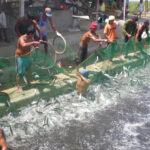
Farming Milkfish In The Philippines: How to Grow and Raise Bangus
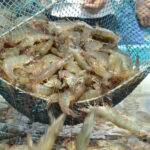
Shrimp Farming in the Philippines: How to Grow Hipon

- Agriculture
Bio-Organic Fertilizer From Coir Dust and Animal Manure

The Secrets to Growing Delicious Tomatoes
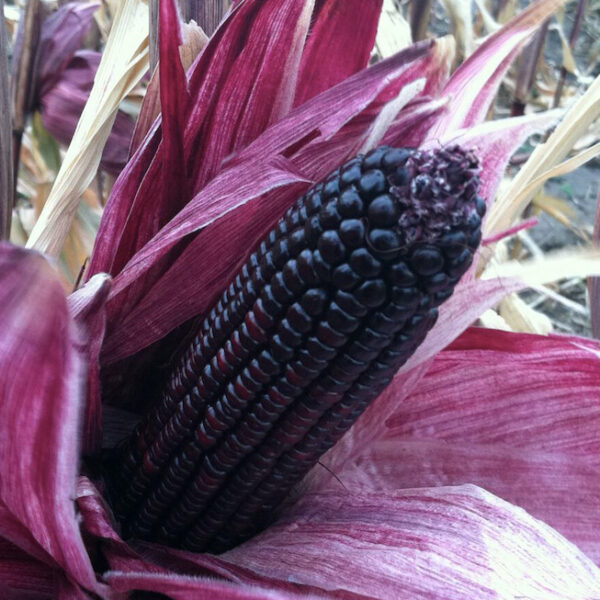
Why More Farmers Should Grow Morado Purple Corn
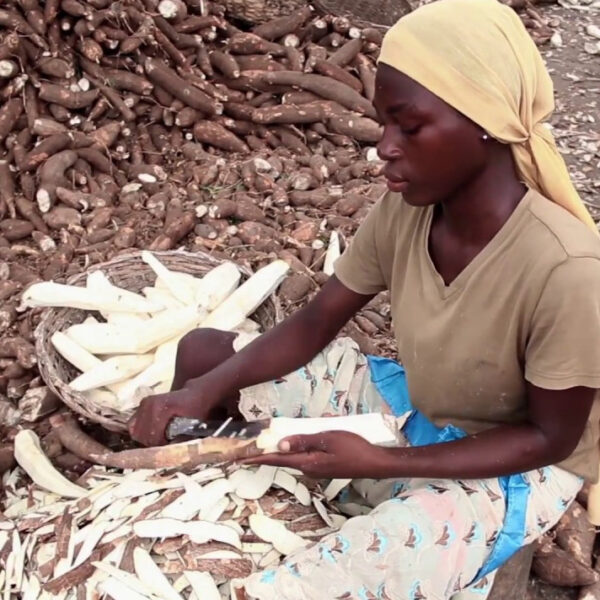
Maximizing Cassava’s Potential: A Sustainable Solution for Livestock Feed
Agroforestry.

Mangkono Tree: The Ironwood of the Philippines

Why Narra Wood is So Expensive
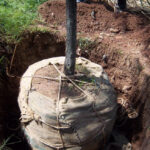
What is “Tree Earth-Balling”?

5 Philippine Native Tree Windbreaks that Can Protect Your Crops from Typhoon

Bamboo Trees Can Help Control Flood
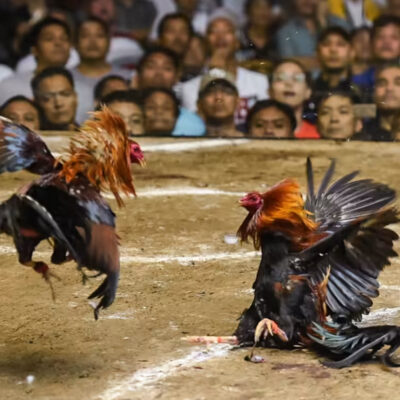
What is Sabong
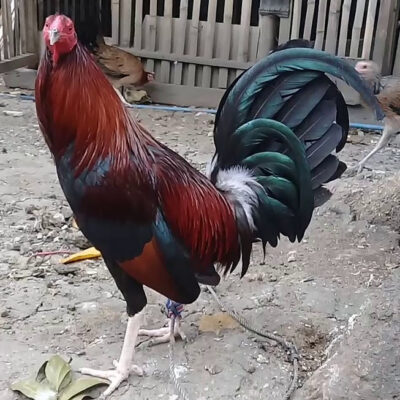
Fighting Cock: All You Need to Know About Fighting Rooster
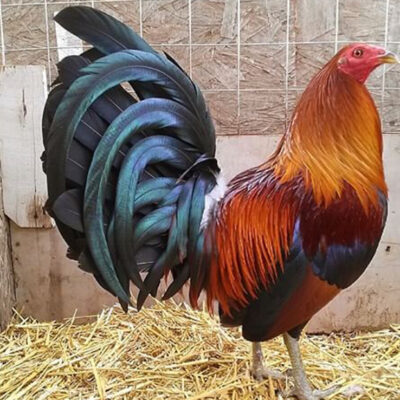
McLean Hatch Gamefowl Breed Profile and Fighting Style
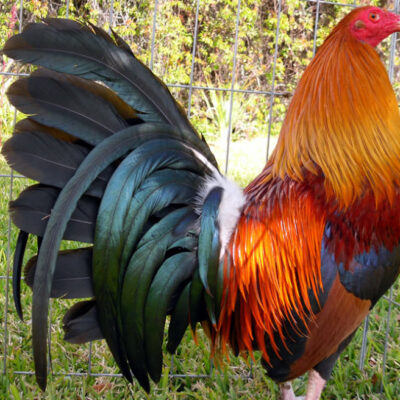
Kelso Gamefowl and its Fighting Style
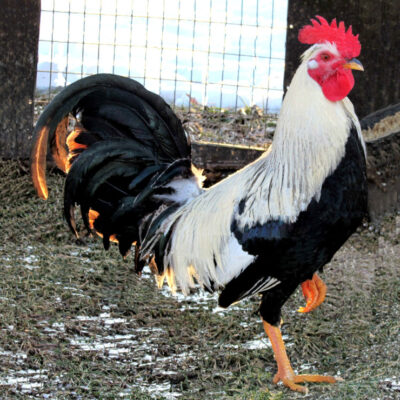
10 Best Fighting Rooster and Gamefowl Breeds
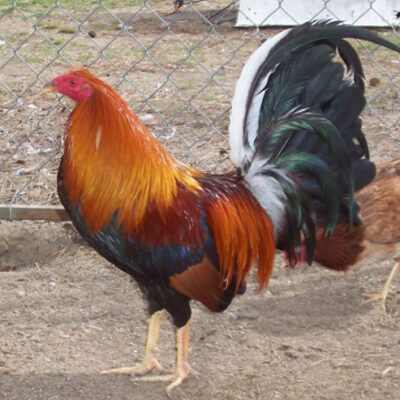
Sweater Gamefowl History and Its Fighting Style

DA Explores Seaweed as Affordable Livestock Feed

Crocodile Farming in the Philippines: How to Grow and Care for Crocodiles
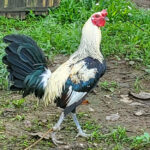
Richard Bates Grey Gamefowl History and Fighting Style
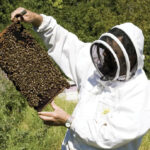
Analyzing the Income-Generating Potential of Beekeeping
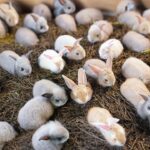
The Rabbitry Revolution: Gigi Morris’ Journey from Fine Dining to Farming in Batangas

Unlocking Sustainability: The Role of Stingless Bees in Apiculture

The Potential Profit of Rabbit Farming in the Philippines
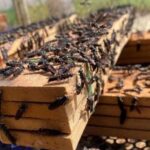
Black Soldier Fly Farming: A Buzzing Opportunity in the Philippines?
Food & health.
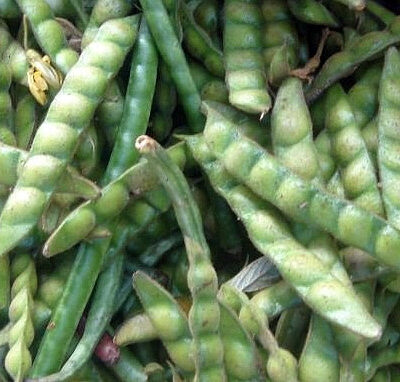
Kadyos: 10 Health Benefits of Pigeon Pea, Description, and Disadvantages
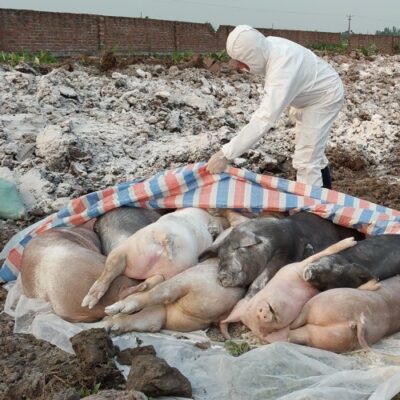
ASF in Antique: San Jose Prohibits Backyard Slaughter of Hogs
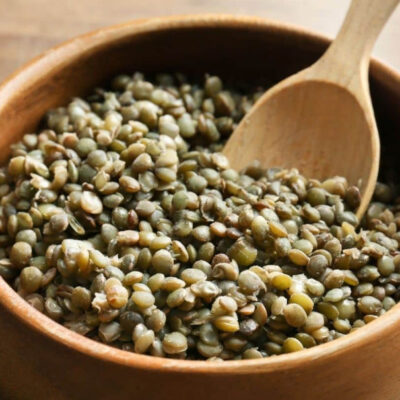
12 Health Benefits of Lentils, Description, and Side Effects
Aquaculture.

Koi Fish Farming: How to Grow Japanese Koi Fish
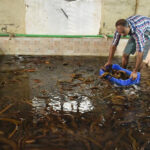
Eel Farming in the Philippines: How to Grow Igat
Medicinal plants.

Yerba Buena: 10 Health Benefits of Peppermint, Medicinal Uses, and Side Effects

7 Medicinal Uses and Benefits of Tuba-Tuba Plant

8 Guava Leaves Benefits, Medicinal Uses, and Side Effects

12 Sambong Powder and Capsule Benefits, Medicinal Uses, and Side Effects

Makahiya: 10 Medicinal Benefits of Shameplant, Description, and Disadvantages
Product reviews.
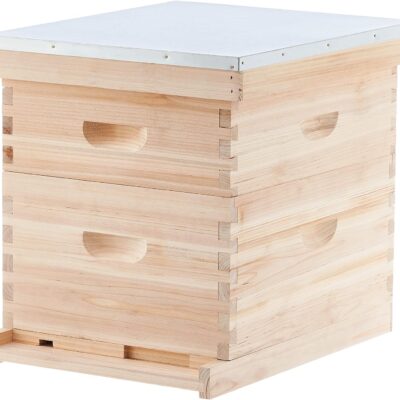
Wooden Beehive vs Plastic Beehive Pros and Cons
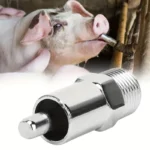
Hog Water Nipples: Types, Pros, Cons, and Alternatives

Honey Extractor Pros and Cons
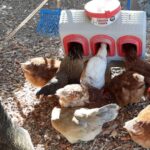
Can DIY Chicken Feeders Really Save You Money?
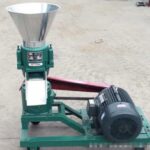
Why Every Animal Farmer Should Buy a Pelletizer Machine
News & opinion.
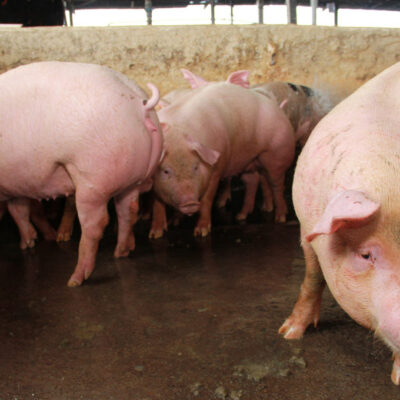
Animal Insurance Urged for Romblon Town

Czech Republic Explores Defense and Agriculture Ties with Trade Missions to the Philippines
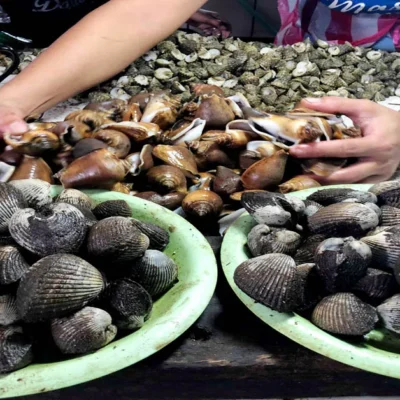
Red Tide Prompts Shellfish Warning in Madridejos Island, Cebu
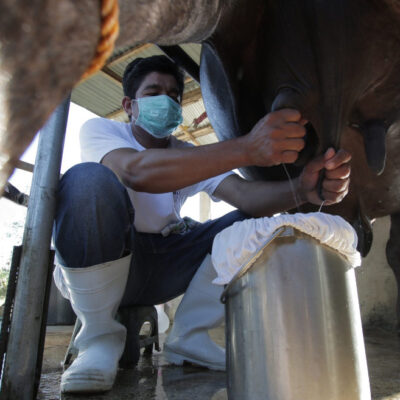
Negros Occidental Partners with Korean AI Firm to Enhance Dairy Production Efficiency
22 Profitable Agribusinesses in the Philippines
- Posted by: First Standard
- Last Updated: December 2, 2021
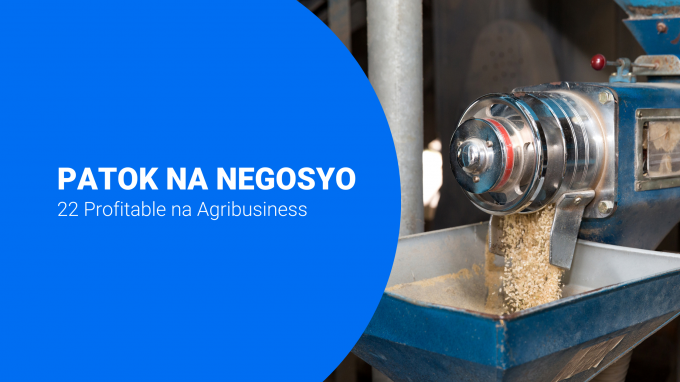
As the economy slowly opens up, we see a strong year for many agribusinesses in the Philippines this 2022.
Whether you have an established business or just starting, it pays to look at the trends to explore how you can improve productivity and increase profits.
Here are 22 profitable agricultural businesses this coming year (in no particular order):
FRUITS & VEGETABLES

With the pandemic, Filipino consumers are making healthier choices and are actively adding more fruits and vegetables into their diet. Demand for fresh produce is foreseen to increase in the next 10 years .
1. Sugarcane (Tubo) – Profits can be seen mostly from the by-product of sugarcane (confectionary, rum, ethanol, building materials, and fuel).
2. Bananas – Bananas are the top-grossing fruit produce as of Q3 of 2021. Projections are positive in the next several years. These crops are easy to maintain and the period from planting to harvesting is short.
3. Pineapple – The average net return of pineapple is P166,030 per hectare in 2019. Its estimated annual rise in profit is up to 3%.
4. Onions – Onion farms have always been profitable as a staple ingredient in Filipino cooking. The average Filipino consumes 1.9 kilos of onions each year.
5. Garlic – another Filipino cuisine staple with very minimal tending requirements. You can start harvesting within 40 days. Garlic had an average net return of P190,291 per hectare in 2019.
6. Organic Crop Farming – consumers are willing to pay more for safer and healthier fruits and vegetables. Consider adding door-to-door delivery to upsell your product.
7. Herbs and Spices – with more people cooking at home, herbs like sweet basil, coriander, dill, tarragon, and lemongrass were in high demand in 2021 and will continue in the coming years.
8. Coffee Beans – the climate in the Philippines makes growing the berries easy plus the growing coffee culture both in urban and rural places has increased the demand for coffee beans.
9. Root crops – particularly, potatoes (all varieties), yams (ube), and carrots achieved an all-time high in demand in 2020 and 2021. Root crops require minimal tending and turnaround time is only around 3 months.

10. Pineapple – The average net return of pineapple is P166,030 per hectare in 2019. Its estimated annual rise in profit is up to 3%.
11. String Beans – this includes all varieties of string beans. These low-maintenance crops can be harvested after 80 days. One can get as much as P260,000 net return per hectare.
12. Herbs and Spices – with more people cooking at home, herbs like sweet basil, coriander, dill, tarragon, and lemongrass were in high demand in 2021 and will continue in the coming years.
13. Hydroponic Farming / Urban Farming – no land, no problem. Hydroponic farms have been popping up in metropolitan cities since 2018. The trend will rise as more businesses shift to agriculture. Start with this article if you’re curious.

Livestock farming often requires bigger capital. However, it also means bigger returns in the process.
14. Hog Raising (Piggeries) – pork will continue to be a highly consumed meat in the country. One sow (female pig) costs around P20,000 – P30,000.
15. Poultry – The fast turnaround of chickens (45 days) makes this industry very lucrative.
16. Eggs – You can either be the supplier or a distributor. Eggs have always been profitable when your business is scaled.
17. Backyard Farming Cattle – T he average farmgate price of cattle for slaughter in backyard farms for July to September 2021 was estimated at P147.21 per kg. That’s a 15.1% increase from the previous year, according to the Philippine Statistics Office .
18. Dairy Farming – In 2020, Australia and the Philippines have launched a research initiative to maximize the potential of the Philippine dairy industry. You’ll notice more local dairy-based products on grocery shelves and online retail stores in the coming years.
19. Milkfish (Bangus) and Tilapia – You can start a small backyard fishery for around P100,000. This includes pond excavation, irrigation preparation, and your first batch of fingerlings.
AGRI SUPPLIES

There’s plenty of profits to be made in agribusiness supplies too! This type of business doesn’t require a lot of farming know-how. Your main concern will revolve around transport and supply logistics.
20. Livestock Feeds (Distributor) – chicken and hog feed are two of the most profitable options. Sign up as a distributor to move things a lot faster.
21. Farm Machinery Leasing – Go the B2B route and lease trucks, tractors, air seeders, cultivators, and lifters. The more machinery you have to rent out, the faster the returns for your initial investment.
22. Aquaculture Supplies – explore getting into the business of fish feed and fishery machineries like water pumps, nets, and traps.
OTHER NOTABLE AGRIBUSINESSES:
Landscaping/Ornamental Plants Supplies – be a tita to the plantita and sell pots, plant stands, fertilizers, plant food, insecticides, and other landscaping needs.
Packaging – Supply other farming businesses with rice sacks, food-grade packaging, styro boxes, and jam jars. This B2B business can even go beyond the bounds of agriculture if you so choose.
First Standard can help you start any agribusiness expansion in as fast as 5 days with flexible terms. Get in touch with us today to learn more.
Recommended Reads

Top 10 Profitable Businesses in the Philippines in 2024
New year, new business! Let’s welcome 2024 with a new source of revenue!

This is Why Saving Up is Not Enough
Most Filipinos believe that saving up is enough to become financially free and stable. It's not and here's why.

4 Reality Checkpoints in Growing Your Business
With so many “experts” saying how simple it is to grow a business, then there would be more Filipino entrepreneurs, right? While we highly encourage making your savings work for you...

SEC Reg. No. ASO93-04331 CA No. 954

- Agriculture Farming
- Livestock Farming
Project Reports
- Hydroponics
- Best Fertilizers
- Vertical Farming
- Sheep Farming
- Goat Farming
- Poultry Farming
- Fish Farming
- Pig Farming
- Dairy Farming
- Rabbit Farming
- Success Stories of Farmers
- Boost Fruit Yield
- District Wise Crop Production
- Schemes & Subsidies
- Agriculture Colleges
- Farm Insurance
- Disease Control And Management
Agriculture
Aquaculture
Horticulture
Agri Business
Dairy Farming in Philippines: Breeds, How to Start
Table of contents, major trends contributing to dairy development , dairy cooperatives and farmers’ organizations in philippines, holstein-friesian, brown swiss, production policy under dairy farming in philippines, types of dairy farms in the philippines, feeding management, good nutrition management guidelines, challenges facing the philippines dairy industry.
The dairy industry in the Philippines is expanding. Dairy imports are increasing rapidly to meet the changing demand to boost local dairy production. While the country faces record-high imports, they do not want to rely on them. Overall, the whole industry looks ready for growth. The average Filipino is generally considered a non-dairy drinker. About 99% of dairy products are imported into the Philippines, which provides a significant opportunity for industry development. Let’s check out more info on dairy farming in Philippines.
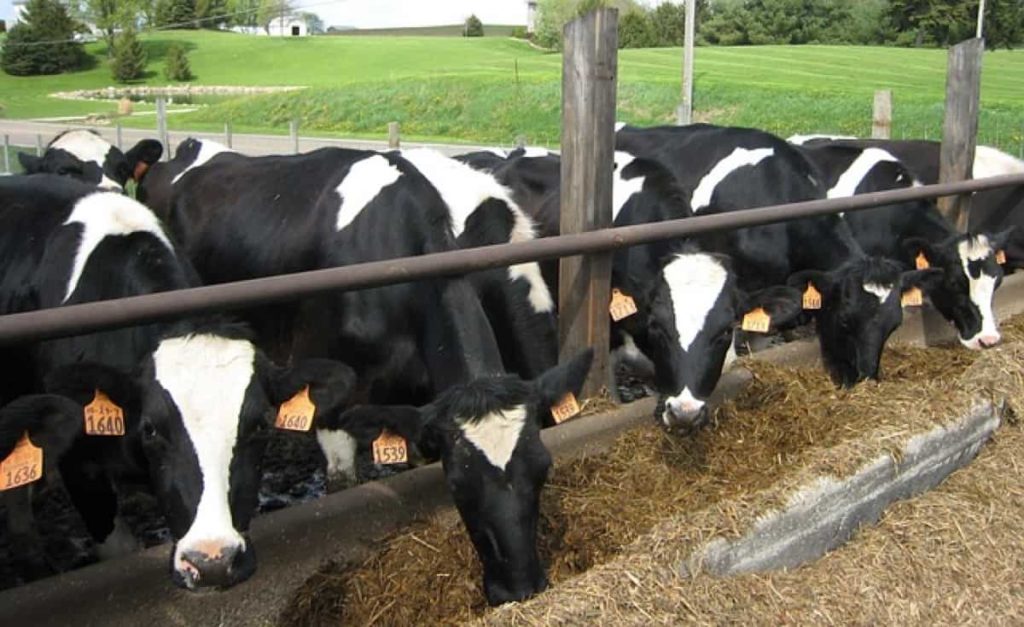
The Philippine government has given priority to the development of the dairy sector. According to the National Dairy Authority (NDA), the Philippines imports almost all of its dairy products, especially milk powder, as domestic production cannot meet the country’s dairy demand of approximately 3.0 million metric tons (MMT) of liquid milk equivalent (LME) per year.
In the Philippines, the dairy sector can be described as ‘rather small, fragmented and stagnant, with 1 to 2% of national milk consumption coming from local suppliers. This sector is also diverse and not well developed but there is a change in prices apart from short- and long-term fluctuations. Despite many difficulties, milk production is technically possible. Dairy has not yet been recognized as a major development sector and is facing an uphill battle by imitating developments in other countries.
The local Philippine government has become a partner for dairy farms, providing land, loans, and sponsorship. One important benefit that benefits dairy farms is linked to milk feeding programs. Local milk and cow farms provide dairy products to local schools, creating a strong bond around the dairy. Relationships between large and small farms also play a key role in dairy production. The law and the national development plan promote smallholder dairy, as contained in the following relevant provisions;
In case you miss this: Equipment Needed for Dairy Farming: Small Dairy Machinery Details
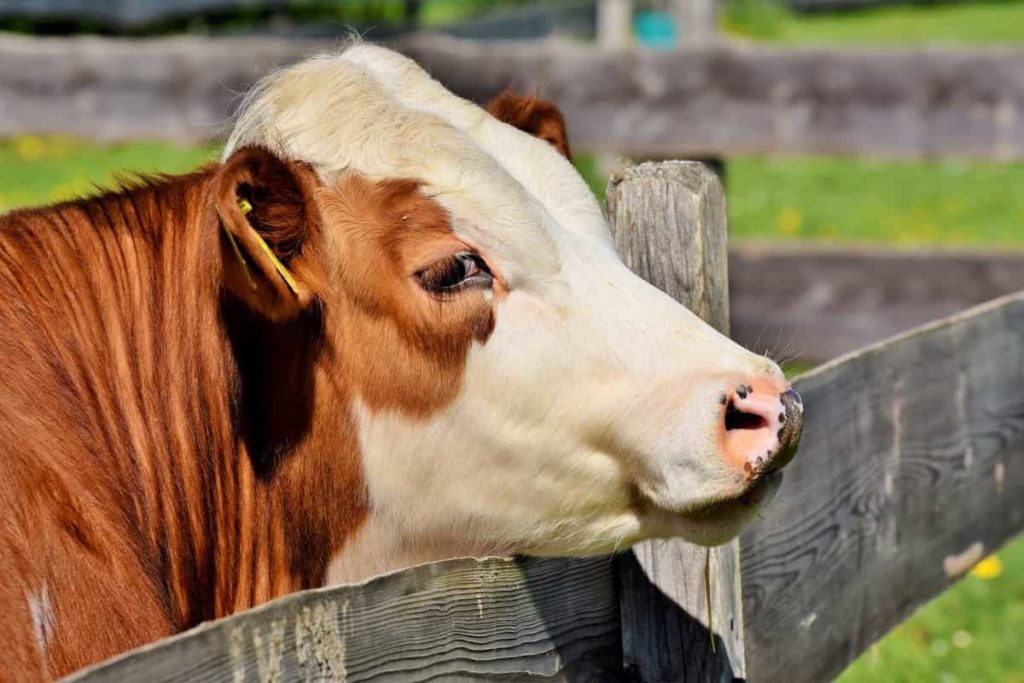
- To provide assistance and support in the production, processing, and marketing activities of all persons engaged in the business of milk and other dairy products through the provision of essential support systems, especially small dairy farmers living in rural areas;
- Recognize them as key agents in the development of the Philippine dairy industry, encouraging and promoting the active participation of farm families, rural cooperatives, and the private sector;
- Develop and disseminate dairy technology based on smallholders.
The Authority [NDA] will assist small milk producers and processors in organizing other forms of cooperatives or organizations to achieve the objectives of this Act, including;
- To facilitate collective arrangements. This will enable the cooperative to obtain dairy animals, veterinary, feeds, and other goods, materials, equipment, all kinds of services, and other dairy inputs under favorable conditions.
- Provide a forum for members of cooperatives to discuss common issues affecting the cooperative’s relationship with production, marketing, and authority;
- To help design the credit system that will provide loans, grants, and services that are needed, to properly-recognized organizations of dairy cooperatives and people;
- Help develop cooperative market channels and negotiate for milk production bulk outlets.
Housing management
Protect animals from excessive heat and rain, especially during milking time. Construct in an open space as a shed for cattle. A 12 ft x 12 ft fence is enough for 4 to 5 cows. An area of 10 feet x 3 feet will suffice as a shed for barn and feeding. The calves should be raised to a height of 2 feet, 4 feet x 8 feet in area. If you decide to milk twice a day, a 4 feet high section is needed to easily separate the calf from the mother.
If milking is done only in the morning, the calves should be provided with a separate wall in the open air. Take care of cleanliness in the area. The floor must be cemented and well-drained. Provide adequate food, water, and hay racks for the animals. Two compartments are needed to control the cows. In a dairy of four to five cows, three to four cows will be in the milking line.
In case you miss this: Dairy Farm Insurance in India, Companies, Policy, and Premium
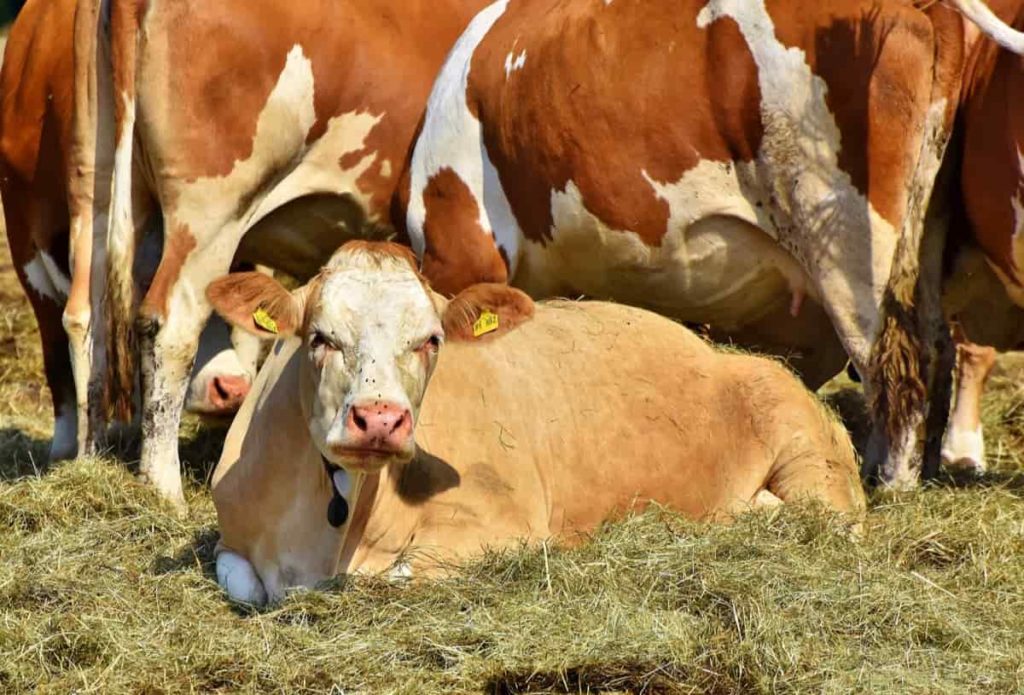
Important dairy breeds
The temperate breeds of dairy cattle that have been successfully raised in the Philippines are Holstein Friesian, Jersey, and Brown Swiss.
Holstein-Friesian produces an average of 22 kg of milk per day, with an average of 3.6% butterfat. These cattle are thought to have been selected for dairy farming for almost 2,000 years.
The Jersey Cow is the second largest breed of dairy cattle in the world. They produce milk with 18% more protein, 20% more calcium, and 25% more butter than any other breed. Jersey is known for its milk which is known for its high quality – it is especially rich in protein, minerals, and trace elements. Jerseys can adapt to a wide variety of climates, environments, and management practices.
Brown Swiss cattle can be gray, dark brown, tan, or almost white. Brown Swiss cows are good, permanent milk producers, producing an average buttermilk content compared to other breeds of dairy cattle. Tropical races such as Sahiwal, the Red Sindhi, and Tharparkar are more suited to the Philippine conditions. But these are dual-purpose breeds that are bred for both their meat and milk and produce less milk than the moderate breeds.
Some other breeds available in the Philippines are Murrah, Nili Ravi, Philippine Carabao.
In case you miss this: Dairy Disease Symptoms and Treatment for Cows, Cattle, Goats, and Sheep
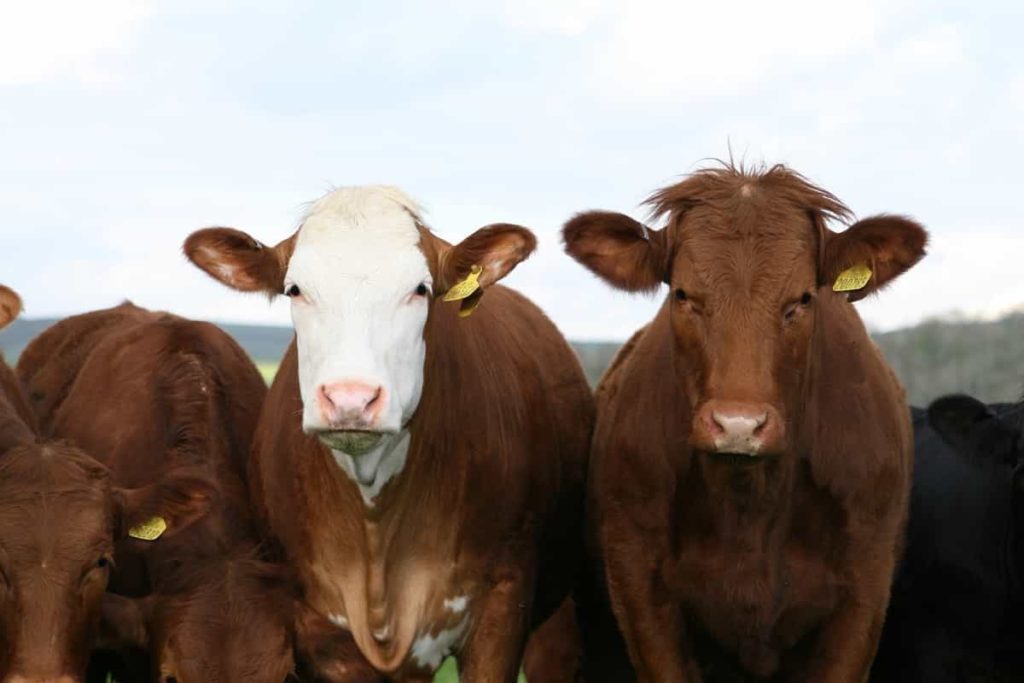
The main priority for the Philippine Department of Agriculture (DA) is making the development of the Philippine dairy industry, with special importance on improving the local fresh milk supply. Although the DA acknowledges that the Philippine powdered milk cannot compete in the milk market, it believes that it can greatly increase the fresh milk supply in the market.
The NDA (National Dairy Authority) is the DA’s primary agency that oversees and supports the Philippine dairy sector’s development. The NDA aims to accelerate dairy herd construction and milk production, increase the coverage of school feeding programs, expand the dairy business through the provision of technical services, and promote milk consumption.
The Philippine dairy industry consists of two separate sectors: a milk powder-based sector that imports, re-processes and repackages milk and dairy products. The other is the liquid milk sector, which includes imported UHT milk and locally produced fresh milk.
- Individual smallholder producers (who use and sell what they produce locally),
- Smallholder cooperatives (which deliver their milk to the collection point for transport to processing plants)
- Commercial farms (which provide processors)
- Government farms (which provide school and rural community feeding programs).
A significant amount of the Philippine fluid milk supply is Ultra High Temperature (UHT) milk reconstituted from imported milk powder because of the country’s limited production and cold chain challenges. The National Dairy Authority aims to accelerate dairy herd construction and milk production. The future of Philippine dairy production is bright with the help of local governments and quality assurance.
In major production systems with a favorable climate, differences should be made, such as in central Mindanao (Bukidnon), hotter but still wet coastal areas where fodder quality is inadequate for high-yielding cows, and in areas with prolonged dry climate conditions where feed protection is essential. One particular case is areas close to the market where buying city-centric feed is relatively easy and profitable (increased distance from the city indicates lower-cost production and higher prices for inputs such as feeds).
In case you miss this: Top 50 Dairy Farming Tips, Ideas, and Techniques
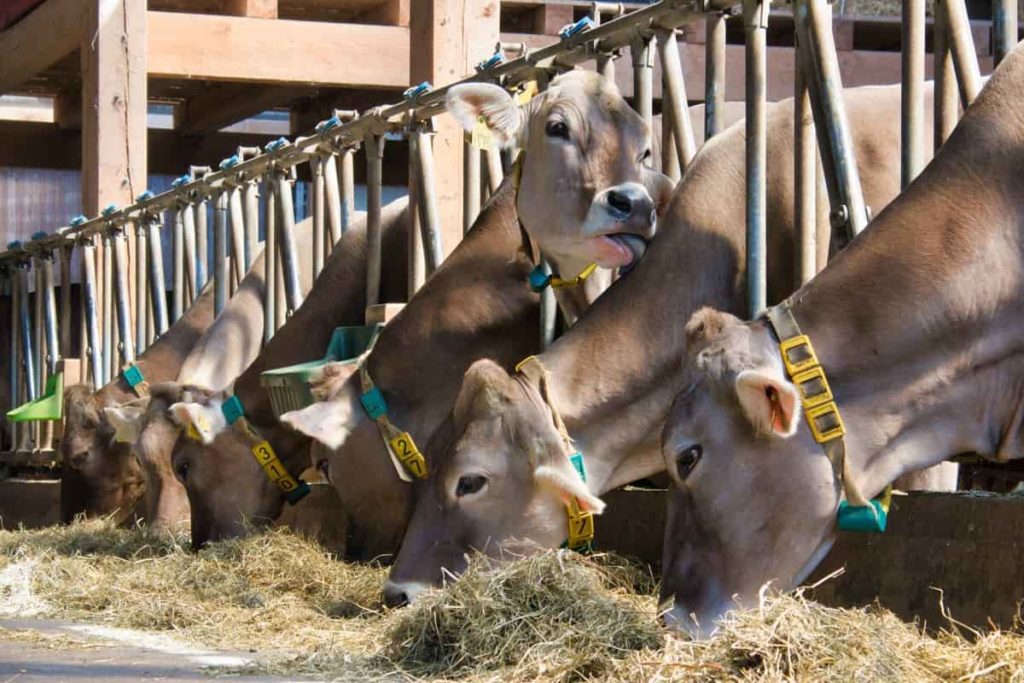
High-yielding dairy cows need food that meets the nutritional requirements for high milk production. Amino acids, carbohydrates, fatty acids, minerals, vitamins, and water are all nutrients that a lactating cow needs to meet the mammary gland’s demand for milk and milk products. The benefits of installing a feeding system include;
- Deciding whether the feeding system installation is the right solution for the farm and whether there are resources available to operate and maintain it. This is important before investing.
- Choosing the right system. There are many different feeding systems. Knowing how to choose the right one will maximize the return on investment.
- Feed a balanced ration for protein, energy, fiber, vitamins, and minerals.
- Group the cows based on the production and adjust the physical conditions accordingly during lactation.
- Provide exercise for dry cows
- Limit the silage of corn silage fed to dry cows at about 15 kg per day and about 5 kg of grass or its equivalent fodder.
- Maintain a 12–13-month interval to avoid prolonged dry periods by providing good health and nutrition measures and expert reproductive exercises.
In the Philippines, the dairy sector has recently been established and is not yet well developed. Most dairy producers are small-scale, with 5 to 10 cows per herd, working on farms that typically do not exceed three hectares. Production is assembled, processed, and redistributed through cooperatives. The major challenges facing the sector are poor mechanization, water scarcity, low production efficiency, low fodder production, and record shortages which will help track the evolution of dairy farm production.
In case you miss this: Dairy Goat Breeds, List, Milk Production, Breeding
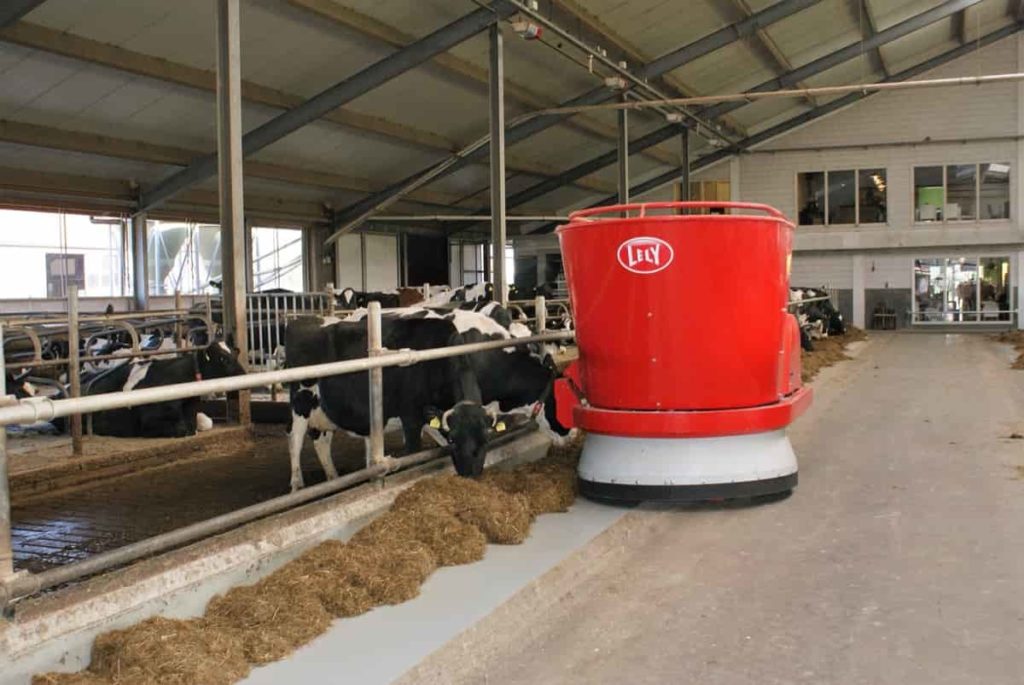
Therefore, only 1.8% of the gross domestic product can support domestic consumption and so the rest has to be imported. Provide cows with a good source of water for the most delicious food, a clean, dry, comfortable environment, and a balanced ratio to meet their production needs. It is important to consult and work with your local veterinarian, diagnostic laboratory, nutritionist, and extension personnel to avoid costly metabolic disorders.
Modern Sheep Farming Technology: The Future of Sheep Husbandry
Goat farming technology: the future of goat husbandry.
- How to Build a Low-budget Goat Shed: Cheap Ideas and Tips
Goat Farming Training Programs in India: A Beginner’s Guide
Types of pesticides used in agriculture: a beginner’s guide, economical aquaculture: a guide to low-budget fish farming, 15 common planting errors that can doom your fruit trees, how to make houseplants bushy: effective tips and ideas, innovative strategies for boosting coconut pollination and yield, pollination strategies for maximum pumpkin yield, the complete guide to chicken fattening: strategies for maximum growth.
- Natural Solutions for Tulip Problems: 100% Effective Remedies for Leaf and Bulb-Related Issues
Revolutionizing Citrus Preservation: Towards a Healthier, Greener Future
- Natural Solutions for Peony Leaf and Flower Problems: 100% Effective Remedies
- Maximizing Profits with Avocado Contract Farming in India: A Comprehensive Guide
- Natural Solutions for Hydrangea Problems: 100% Effective Remedies for Leaf and Flowers
- The Ultimate Guide to Choosing the Perfect Foliage Friend: Bringing Life Indoors
- From Sunlight to Sustainability: 15 Ways to Use Solar Technology in Agriculture
- The Ultimate Guide to Dong Tao Chicken: Exploring from History to Raising
- The Eco-Friendly Makeover: How to Convert Your Unused Swimming Pool into a Fish Pond
- Mastering the Art of Delaware Chicken Farming: Essentials for Healthy Backyard Flocks
- 20 Best Homemade Fertilizers for Money Plant: DIY Recipes and Application Methods
- How to Craft a Comprehensive Free-Range Chicken Farming Business Plan
- Brighten Your Flock: Raising Easter Egger Chickens for Beauty and Bounty
- How to Optimize Your Poultry Egg Farm Business Plan with These Strategies
- Subsidy for Spirulina Cultivation: How Indian Government Schemes Encouraging Spirulina Farmers
- Ultimate Guide to Raising Dominique Chickens: Breeding, Feeding, Egg-Production, and Care
- Mastering the Art of Raising Jersey Giant Chickens: Care, Feeding, and More
- Ultimate Guide to Raising Legbar Chickens: Breeding, Farming Practices, Diet, Egg-Production
- How to Raise Welsummer Chickens: A Comprehensive Guide for Beginners
- How to Protect Indoor Plants in Winter: A Comprehensive Guide
- Ultimate Guide to Grow Bag Gardening: Tips, Tricks, and Planting Ideas for Urban Gardeners
- Guide to Lotus Cultivation: How to Propagate, Plant, Grow, Care, Cost, and Profit
- Agriculture Drone Subsidy Scheme: Government Kisan Subsidy, License, and How to Apply Online
- Ultimate Guide to Raising Araucana Chickens: Breed Profile, Farming Economics, Diet, and Care
- Bringing Hydroponics to Classroom: Importance, Benefits of Learning for School Students
LEAVE A REPLY Cancel reply
Save my name and email in this browser for the next time I comment.
How to Build a Low-budget Goat Shed: Cheap Ideas and...
Natural solutions for tulip problems: 100% effective remedies for leaf..., natural solutions for peony leaf and flower problems: 100% effective..., maximizing profits with avocado contract farming in india: a comprehensive..., natural solutions for hydrangea problems: 100% effective remedies for leaf..., the ultimate guide to choosing the perfect foliage friend: bringing..., from sunlight to sustainability: 15 ways to use solar technology..., the ultimate guide to dong tao chicken: exploring from history..., the eco-friendly makeover: how to convert your unused swimming pool..., borewell drilling cost, pump price, and pipe cost, polyhouse subsidy, cost, profit, project report, tractor subsidy, bank loan, eligibility, schemes, process, malabar neem project report details guide, cold storage project report, cost and subsidy, mushroom farming project report, cost and profit analysis.

IMAGES
VIDEO
COMMENTS
Agri Business. Agri Insurance. Agriculture. Aquaculture. FAQs. Cattle Farming in the Philippines, Requirements, Business Plan, and Management, Breeds of Cattle in the Philippines, Cattle Management Practices and More.
To get started with a new cattle farm business, you need a proactive business plan in place.Getting some insights into the tricks of the trade can be an excellent way to get a footing on where to start. You can spend some time doing thorough research about the different departments you'd need to take care of for a flourishing Cattle Farm Business.
To draw up a roadmap. A business plan for a cattle farm helps you define your objectives and set goals for the next 3-5 years, which can be incredibly useful for achieving success in the long run. The writing process of a business plan requires careful consideration of all aspects of running your cattle farm, from financial management to sales ...
the business of similar project : Vision (How do you see your business in five years) _____. Mission (What will you do to achieve that vision) _____. Project Description (Describe your business, its scope/scale, when will you start the project, and how are you going to start your business)
Cattle Farm Business Plan. Over the past 20+ years, we have helped over 500 entrepreneurs and business owners create business plans to start and grow their cattle farms. We have the experience, resources, and knowledge to help you create a great business plan. In this article, you will learn some background information on why business planning ...
Develop A Cattle Farming Business Plan - The first step in starting a business is to create a detailed cattle farming business plan that outlines all aspects of the venture. This should include potential market size and target customers, the services or products you will offer, pricing strategies and a detailed financial forecast.
Cattle fattening has gained prominence as an important business project of the livestock industry in the Philippines. It gives farmers year-round work and provides them with extra income. They can make use of cheap, plentiful farm byproducts—such as corn stovers, rice straw, copra meal, rice bran, a
Open for Business. 1. Choose the Name for Your Cattle Farm. The first step to starting a cattle farm is to choose your business' name. This is a very important choice since your company name is your brand and will last for the lifetime of your business. Ideally you choose a name that is meaningful and memorable.
Beef Cattle Farming Business Plan - Free download as Word Doc (.doc / .docx), PDF File (.pdf), Text File (.txt) or read online for free. DAJJ Cattle Farming Inc. is a licensed livestock and cattle farming business in the Philippines that produces meat, milk, cheese and butter for domestic and international markets. The company's vision is to become a leading cattle farming brand in the ...
Beef cattle do not require much maintenance, as just sheltering them is enough. 5. Decide the Purpose of Your Farm. Decide on the type of breed of cattle that you want to farm. The maintenance and budget differ for each breed, so plan accordingly. Most of the time, beginners start it with dairy products or beef.
YOU ARE HERE: Home / Downloads / E-Library / Business / B_DTI - PCAARRD Business Guide / Invest in Dairy Cattle Farming. Invest in Dairy Cattle Farming. Download Now! Share this: Click to share on Twitter (Opens in new window) ... 1200 Makati City, Philippines. Feedback. We would like to hear from you.
It takes only 120-180 days to fatten the cattle of feeder stock for the market. At this point, the animal already weighs 275-325 kilograms and is ready for slaughter. "Backyard cattle fattening or on a large scale can be profitably undertaken," says the Department of Agriculture (DA). "It consists of buying healthy stock, feeding and ...
The business plan will be a comprehensive written form of the ideas you have in mind. It will contain necessary details like market, supply, demand, business' strengths and weaknesses, operations, management structure, price points, and more. Grants and loans. If your capital isn't enough for the scale you intend to reach, you can start ...
By Zac B. Sarian. A novel investment scheme for a cow-calf operation designed especially for overseas Filipino workers (OFWs) is being offered by King Ranch, a successful beef cattle breeding and fattening operation in Batangas which is expanding to a 10,000-hectare farm in Palawan. King Carlos, who is managing the ranch together with his ...
Backyard cattle fattening or on a large scale can be profitably undertaken. It consists of buying healthy stock, feeding and fattening them for 120 to 180 days, and selling them at anytime of the year. Minimum space for housing is required: 1.5 to 2 sq. meters per head for a sheltered feeding area, and 5 meters per head for a fenced loafing ...
Get Growthink's Livestock Farming business plan template & step-by-step instructions to easily create your livestock farming business plan. ... Cattle Farm Business Plan. Company. Contact. Site Map. Search Search. Facebook-f Linkedin-in Youtube X-twitter. Headquarters. 12130 Millennium Dr., Suite 300 Los Angeles, CA 90094.
In the Philippines, between 75 and 90 percent of the total cattle production are raised in backyard systems. Small scale cattle production offers many benefits. Raising cattle on the farm helps to promote integration with crops, trees and soil and nutrient cycling is facilitated. Crop residues not suited for human consumption can be converted ...
For an investment of around P18,000, the cattle can be sold at around P25,000 to P30,000 after a year if properly taken care of. That means for a P12,000 profit, he can get P6,000 per head as the caretaker (the other P6,000 for the owner). In 3 heads, he can get P18,000 as profit. That's a good return on investment compared to savings account ...
Realization of objectives. You might realize the objectives you set out to achieve, making it necessary to change tactics if there's nothing more to achieve. Changes in cattle feed crops. You might want to shift from grass-based farming to rearing cows using field forage crops like corn for silage.
One of the basic branches of agriculture is cattle farming [] and it occupies a priority place in the economy of animal production [] (p. 92).Cows are responsible for a variety of products that also derive from this from this important branch, such as: milk, meat, skins, manure, etc. [] (p. 92).The economic situation of dairy farms in the European Union (EU) is unstable and strongly ...
Mangkono Tree: The Ironwood of the Philippines. April 14, 2024. One of the Philippines' most incredible natural resources is the Mangkono tree, also known as "The Iron Wood Tree." This unique and valuable tree is a true gem of the Philippines, particularly...
3. Pineapple - The average net return of pineapple is P166,030 per hectare in 2019. Its estimated annual rise in profit is up to 3%. 4. Onions - Onion farms have always been profitable as a staple ingredient in Filipino cooking. The average Filipino consumes 1.9 kilos of onions each year. 5.
A 12 ft x 12 ft fence is enough for 4 to 5 cows. An area of 10 feet x 3 feet will suffice as a shed for barn and feeding. The calves should be raised to a height of 2 feet, 4 feet x 8 feet in area. If you decide to milk twice a day, a 4 feet high section is needed to easily separate the calf from the mother.